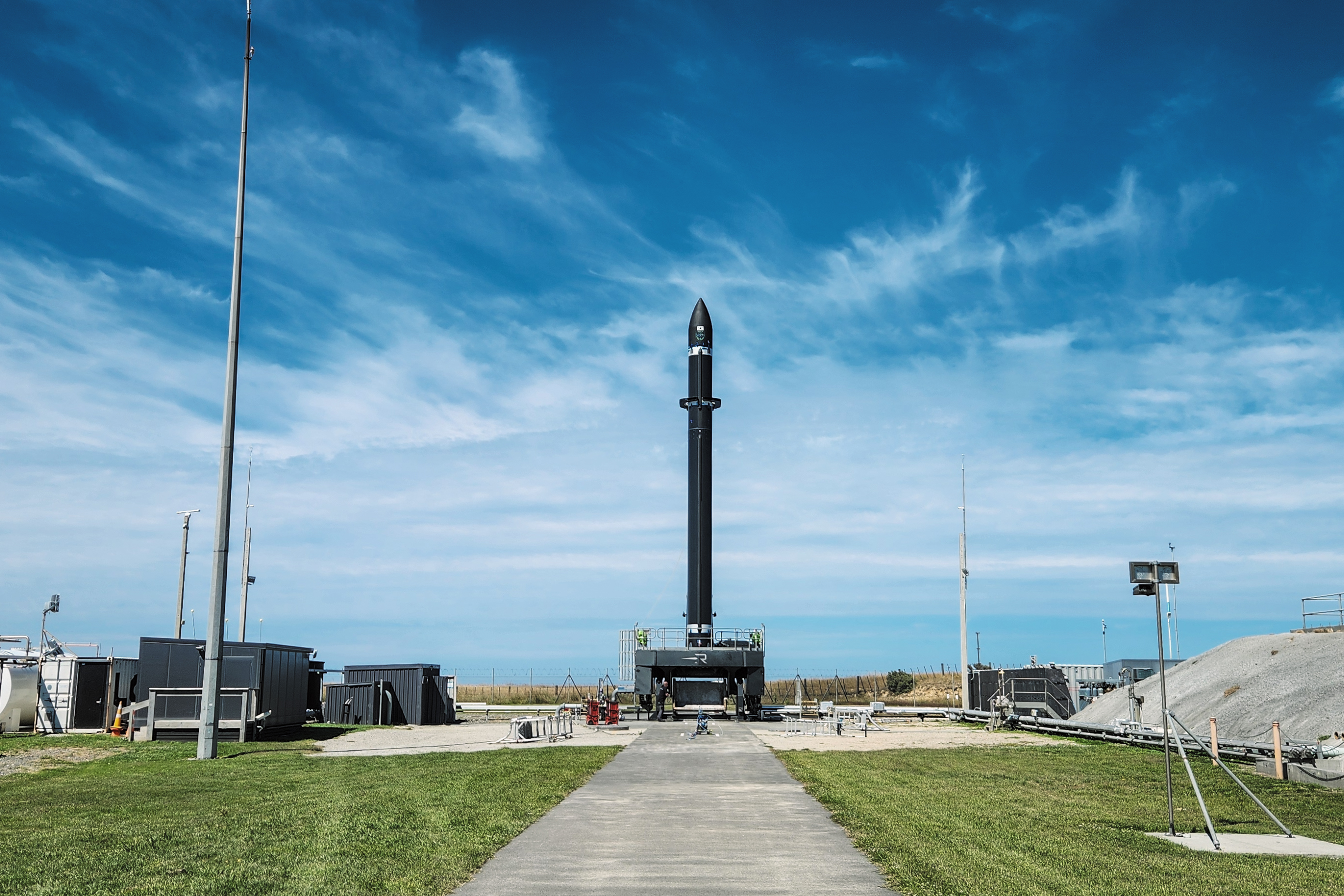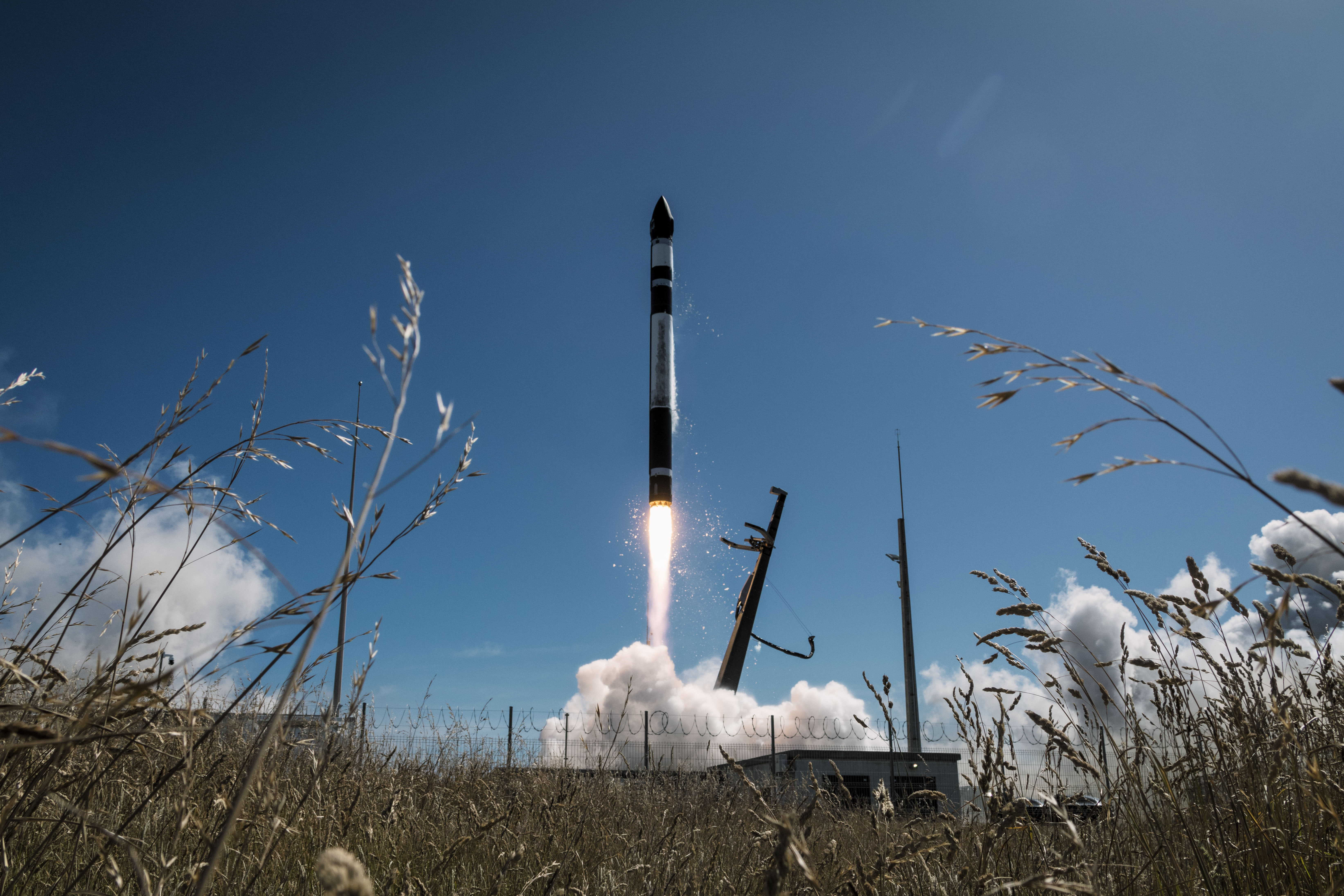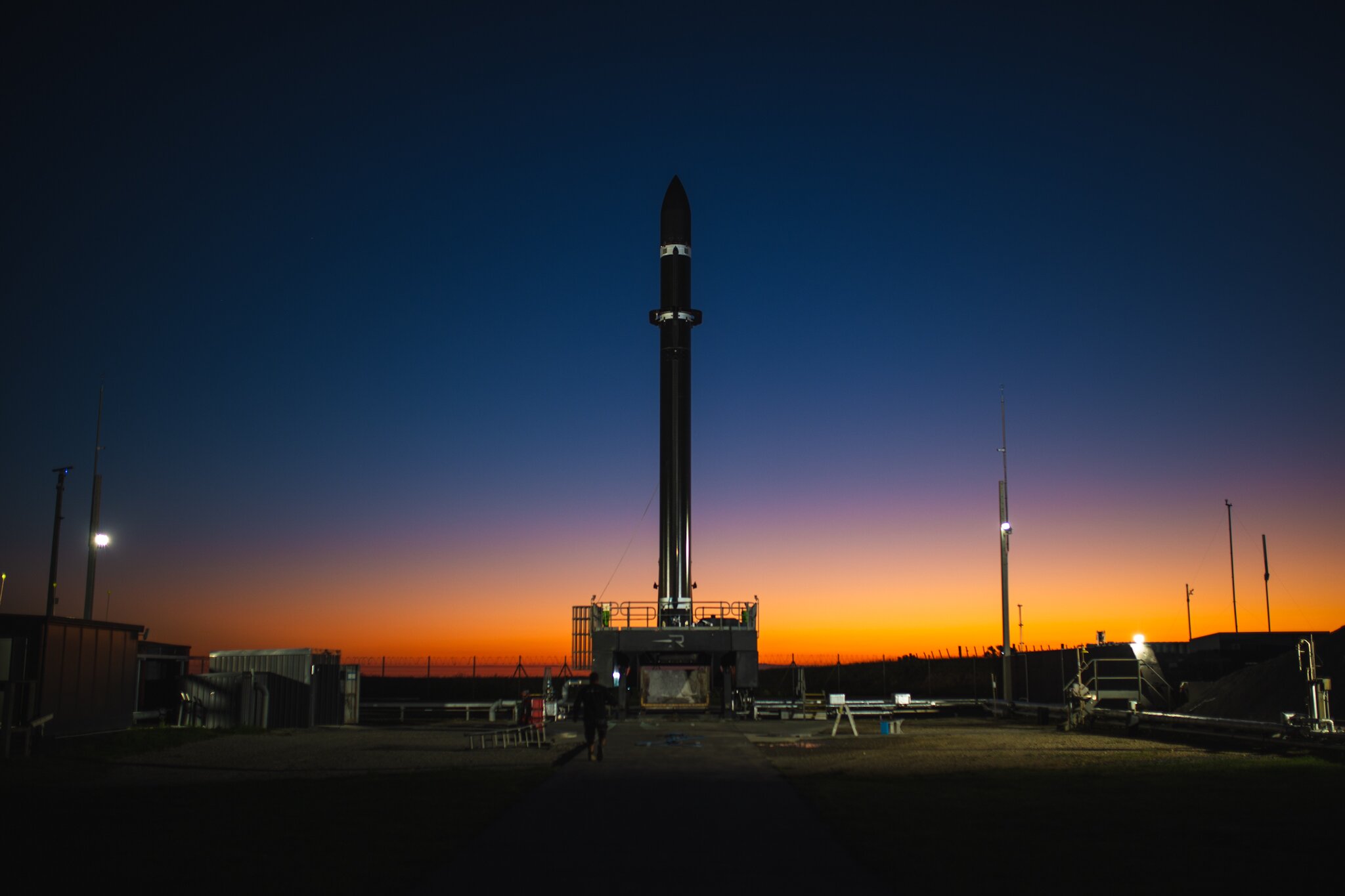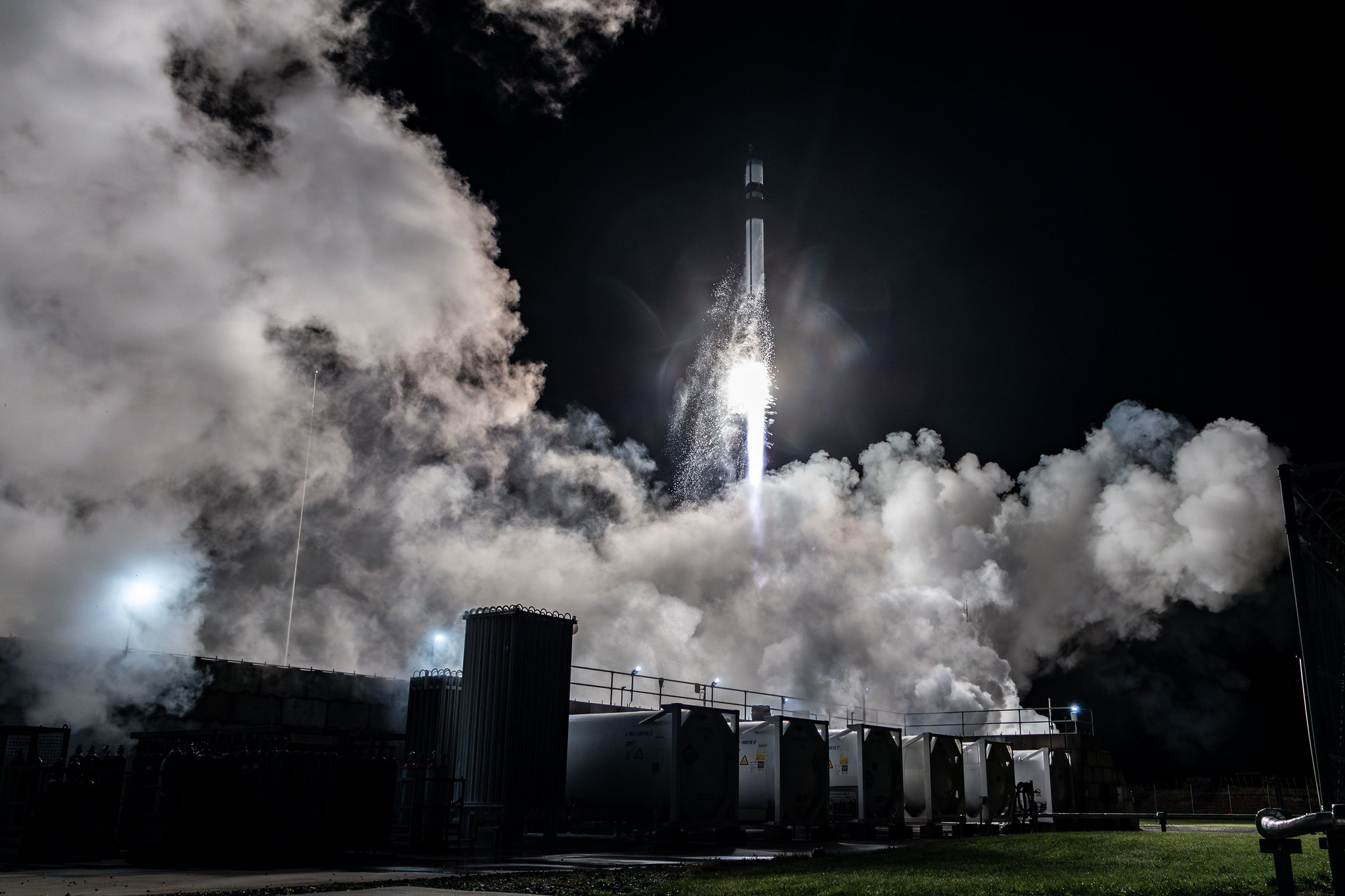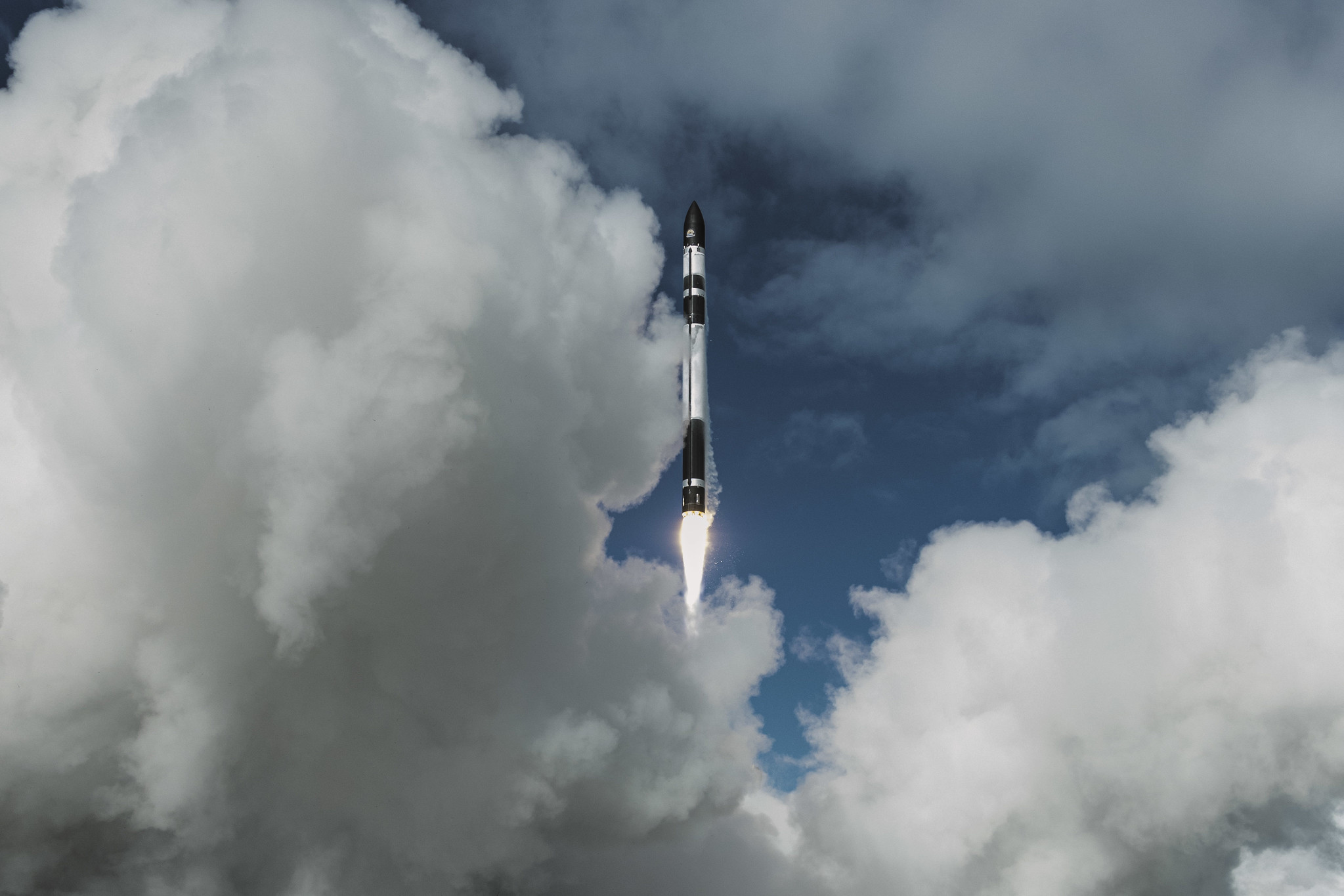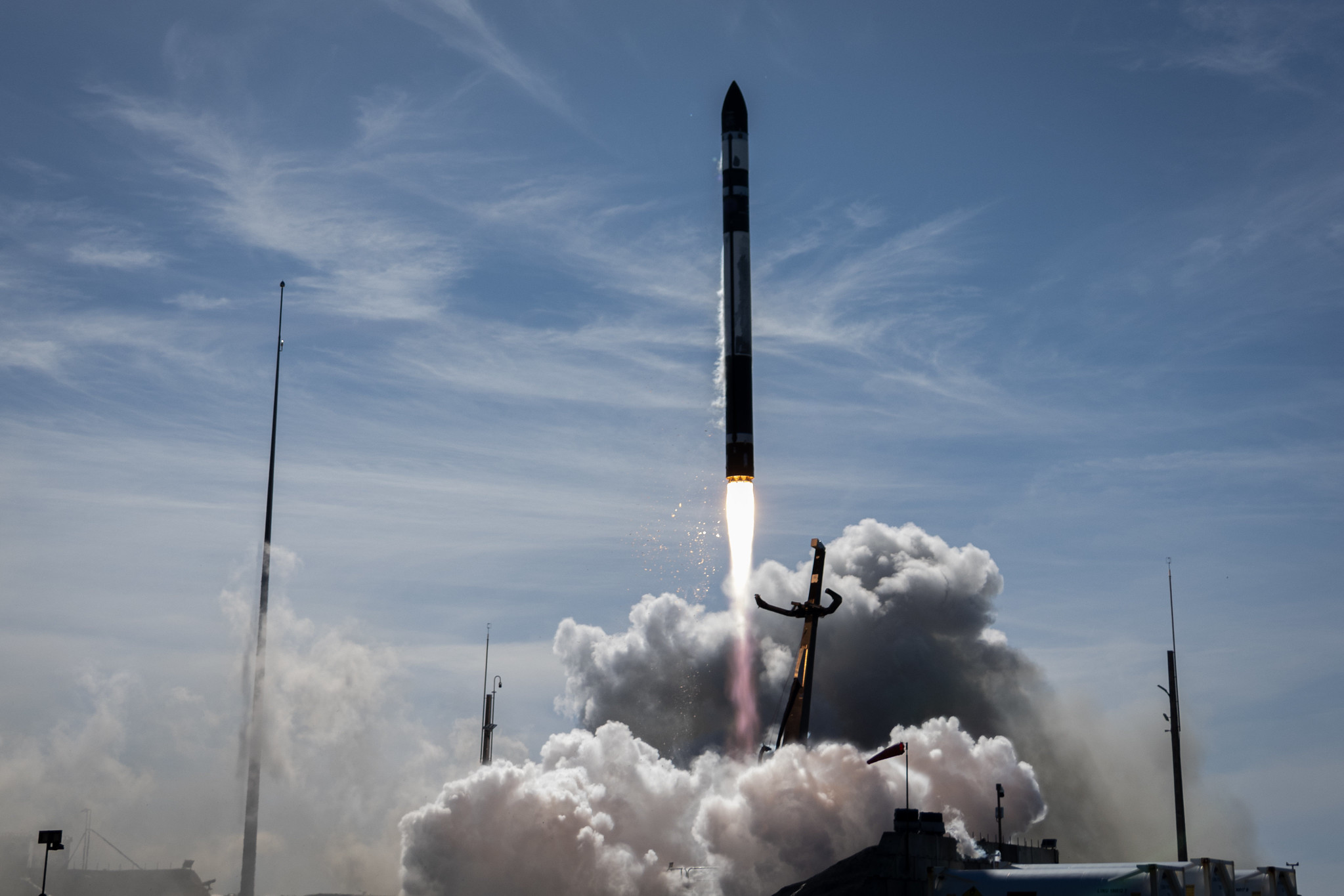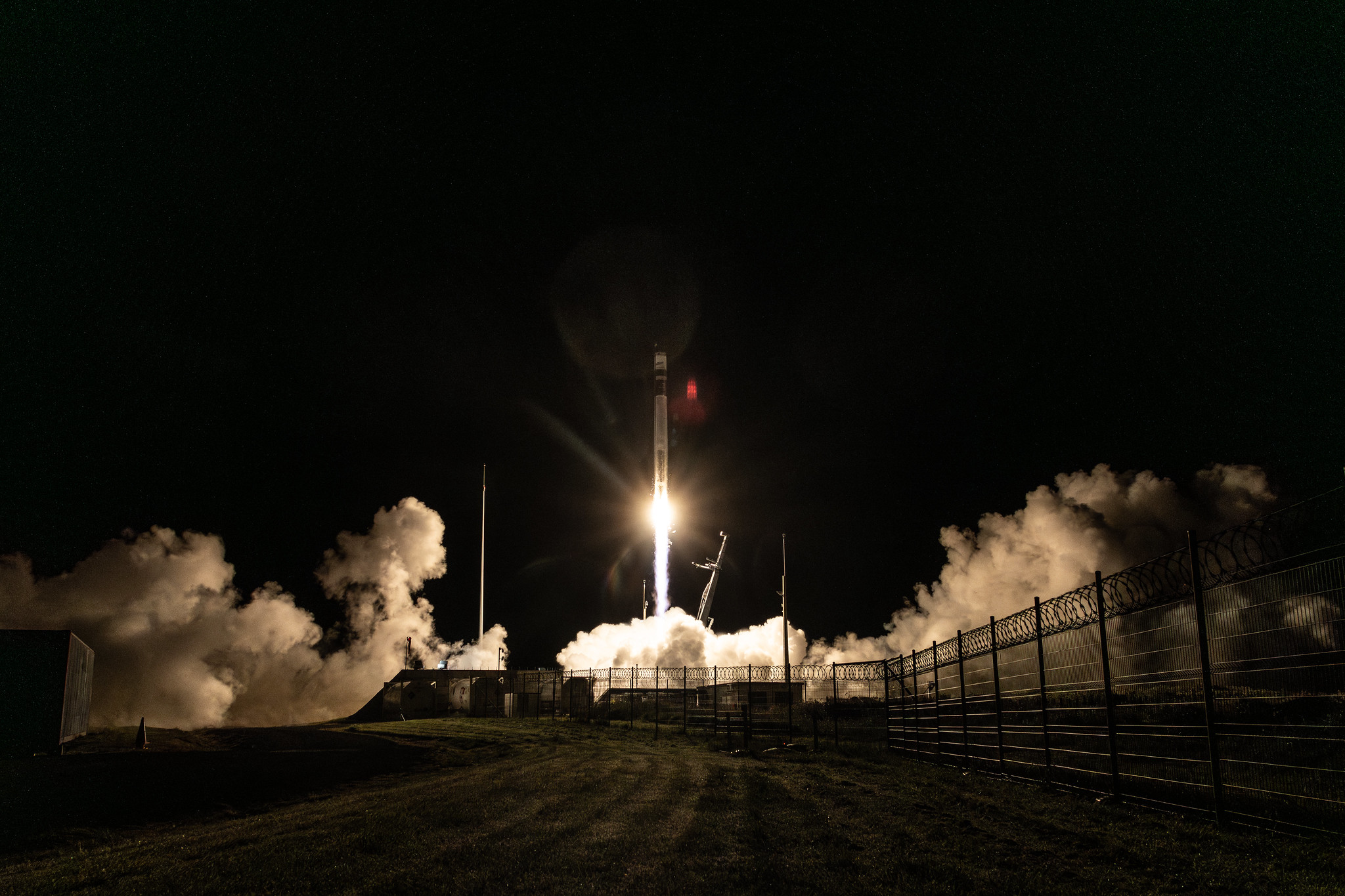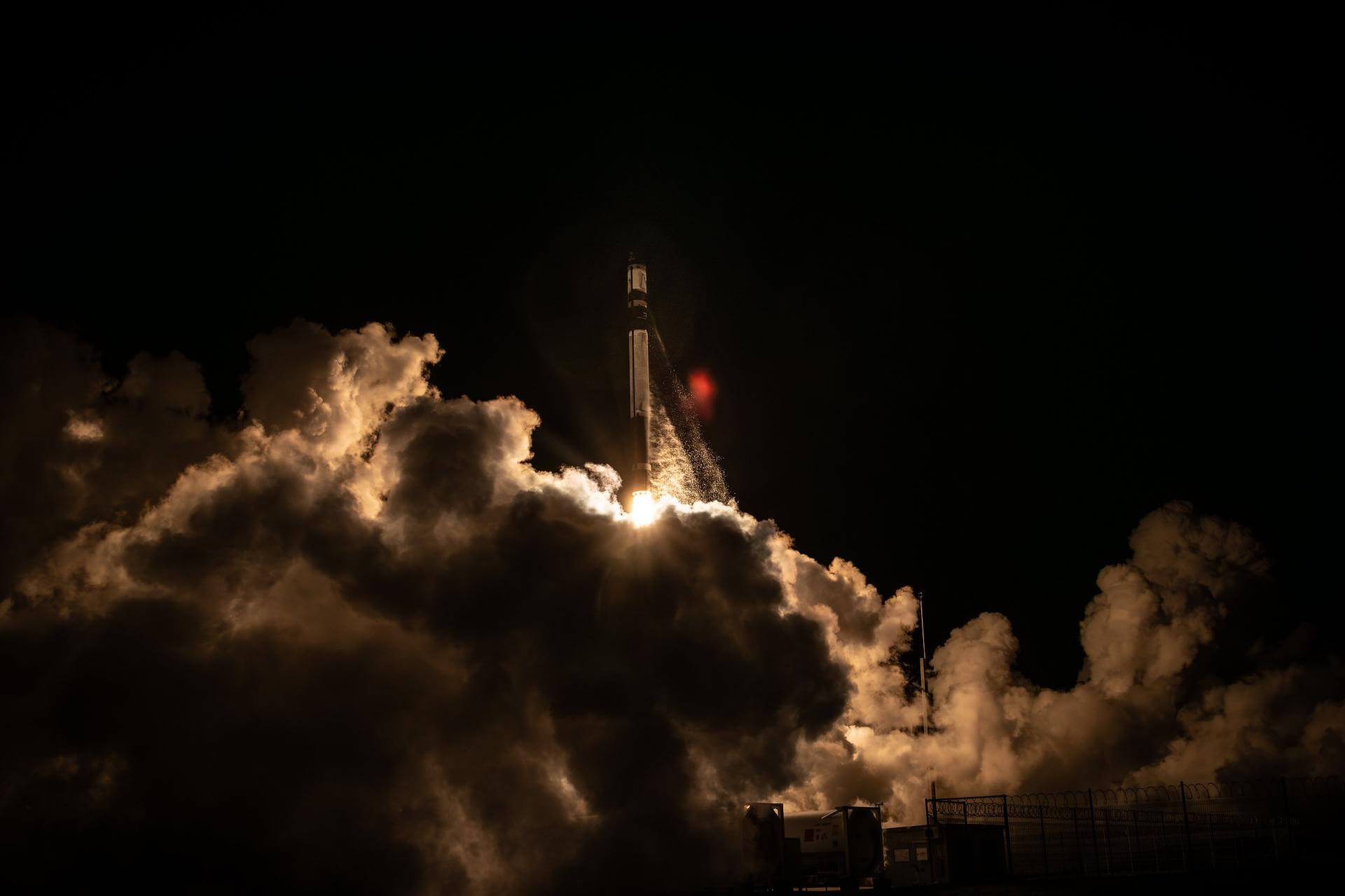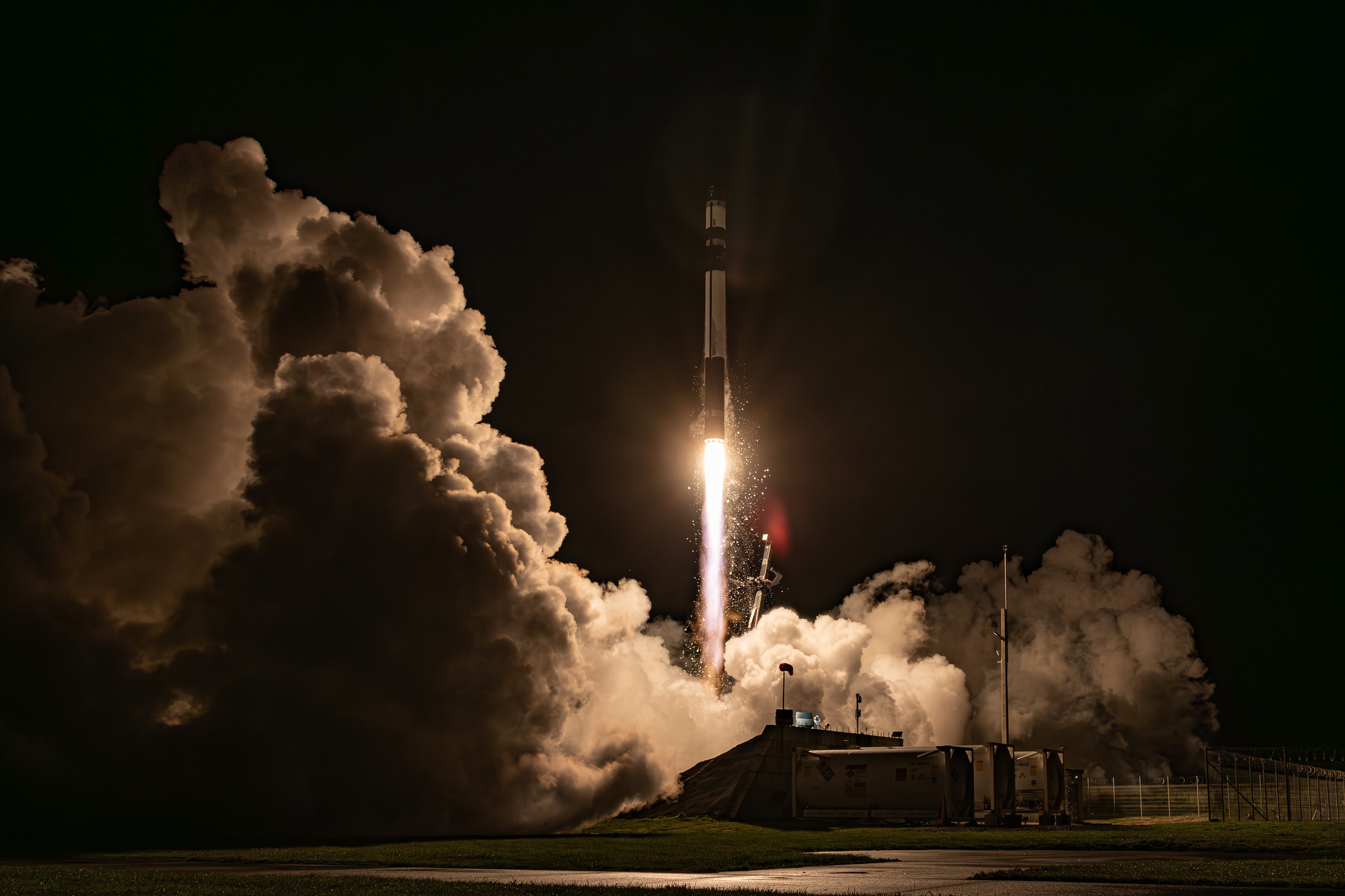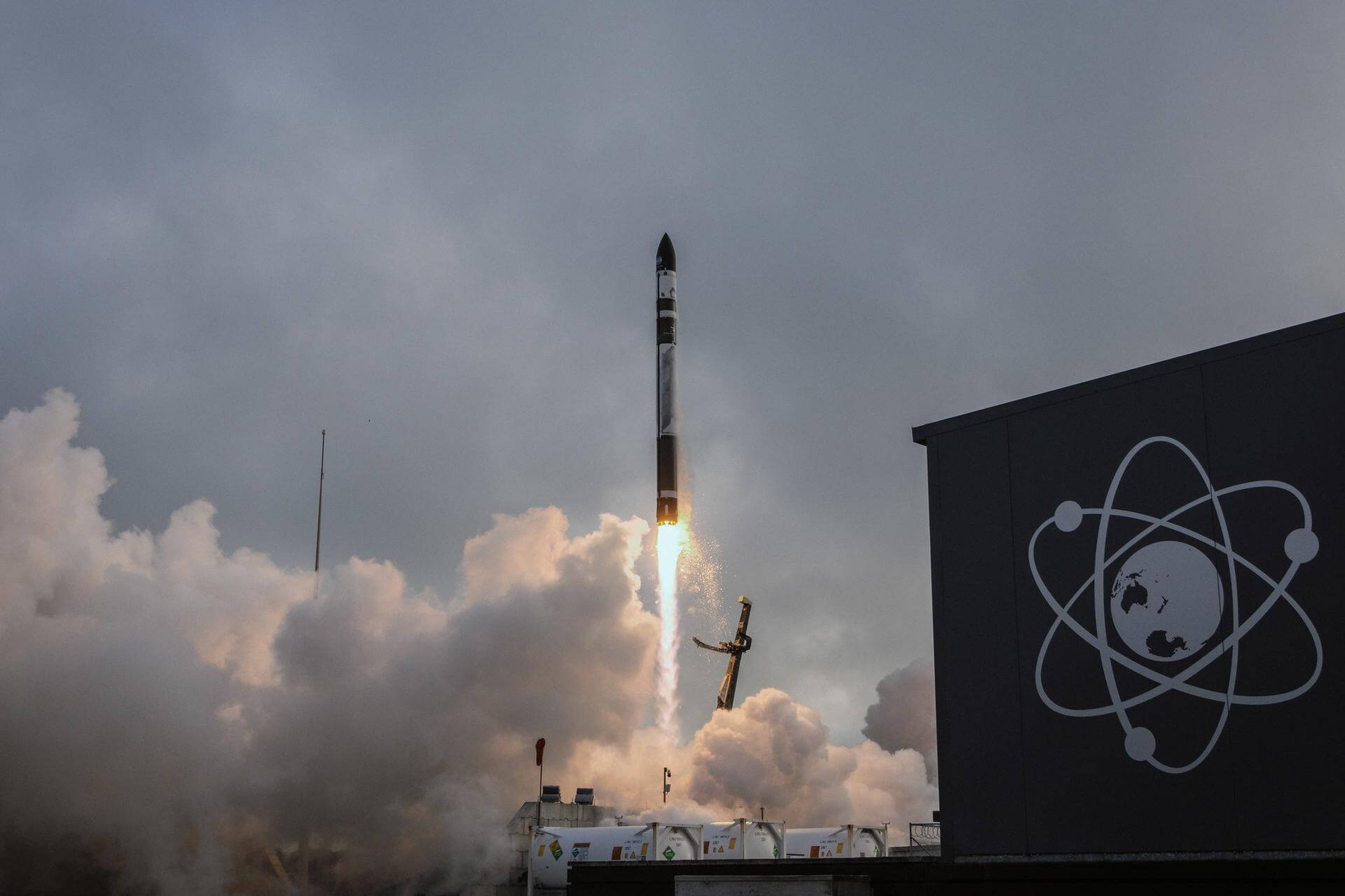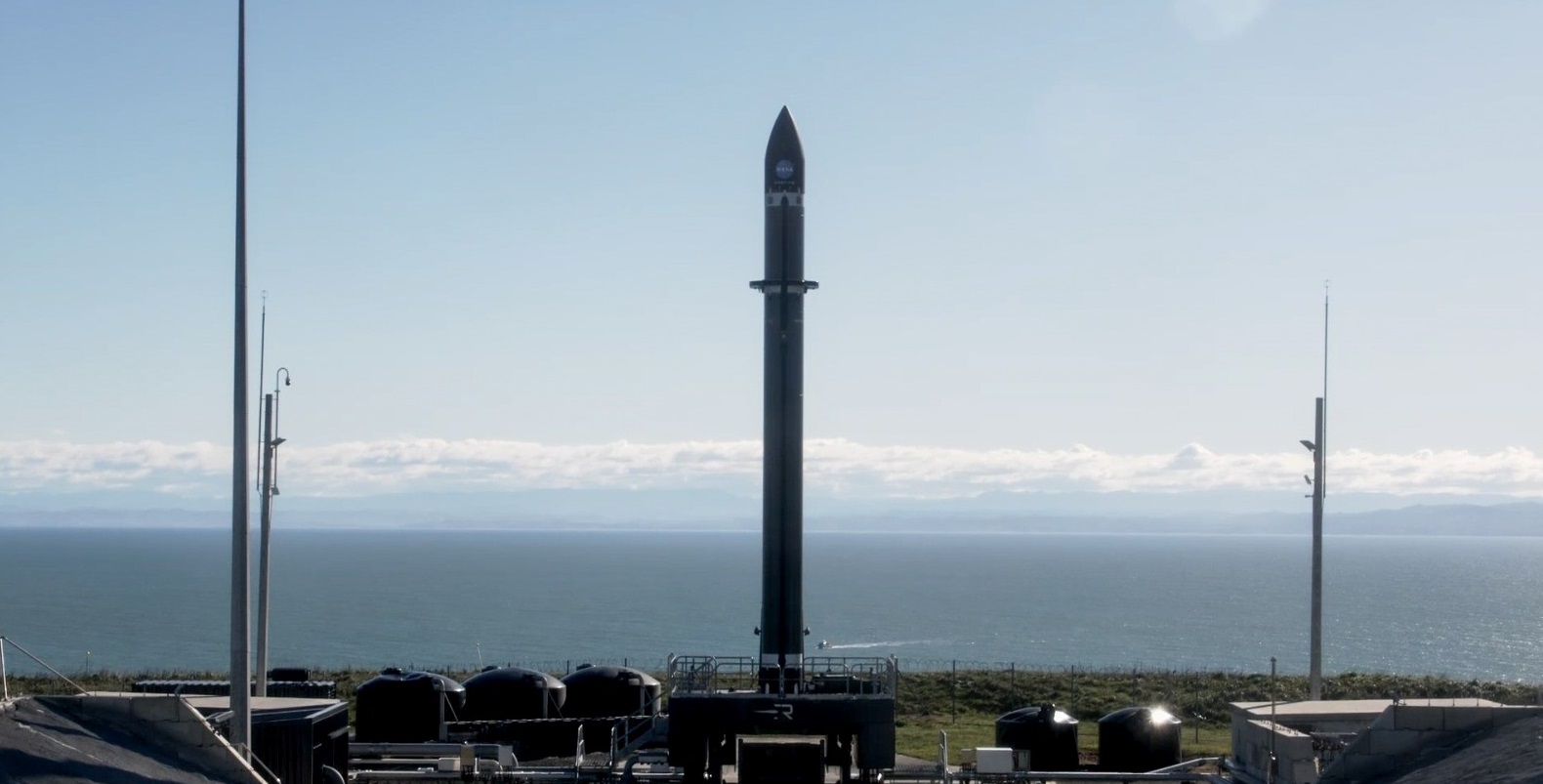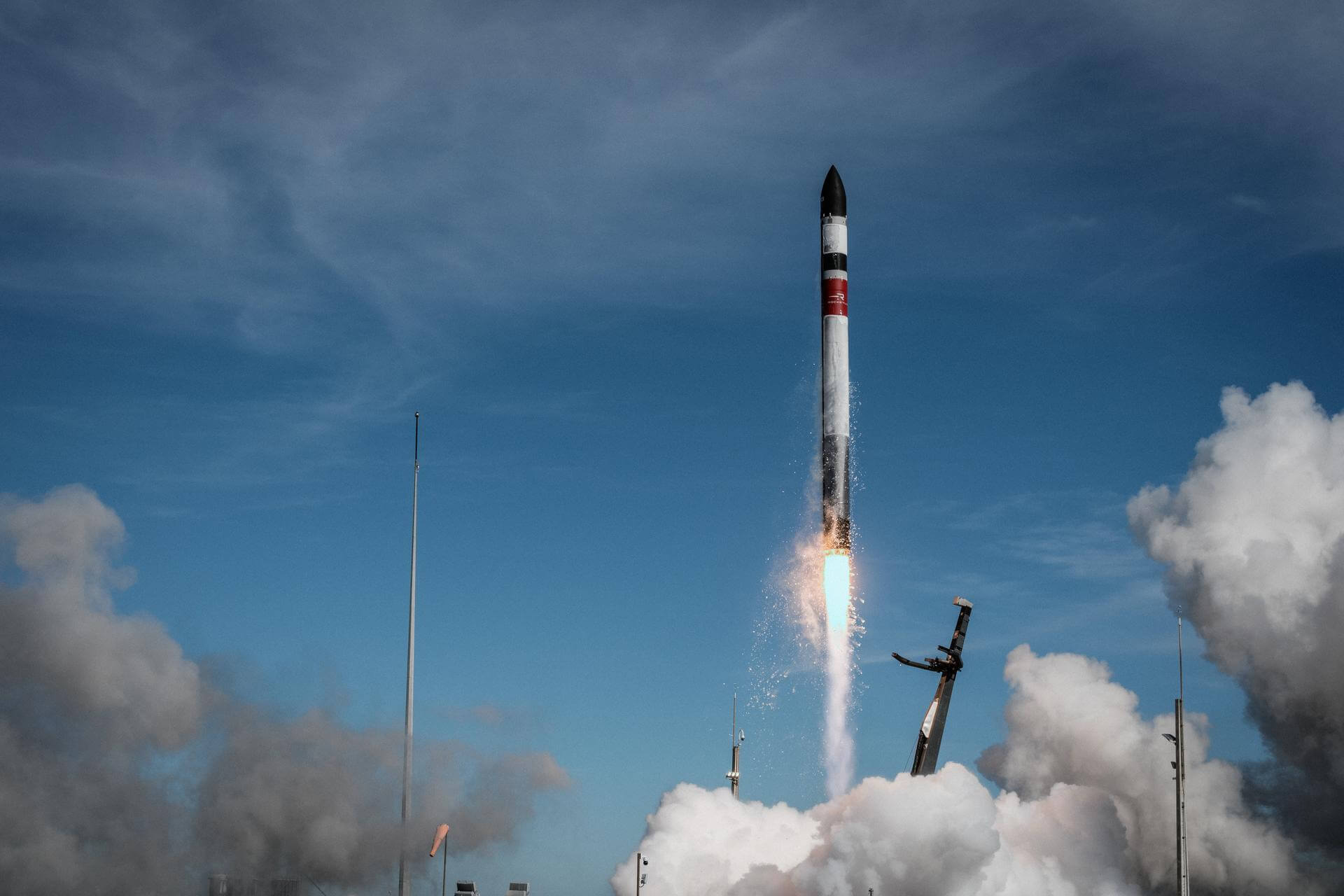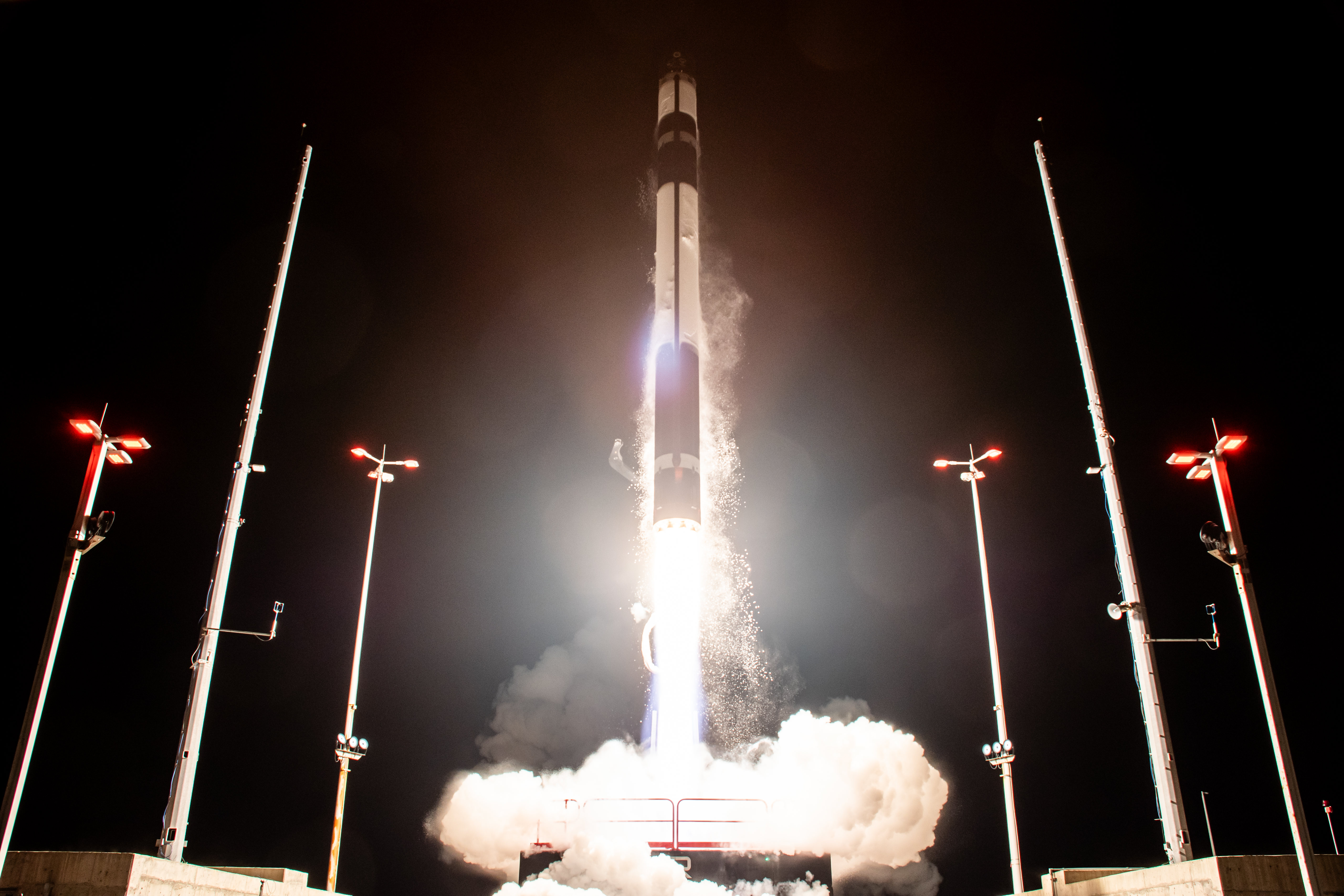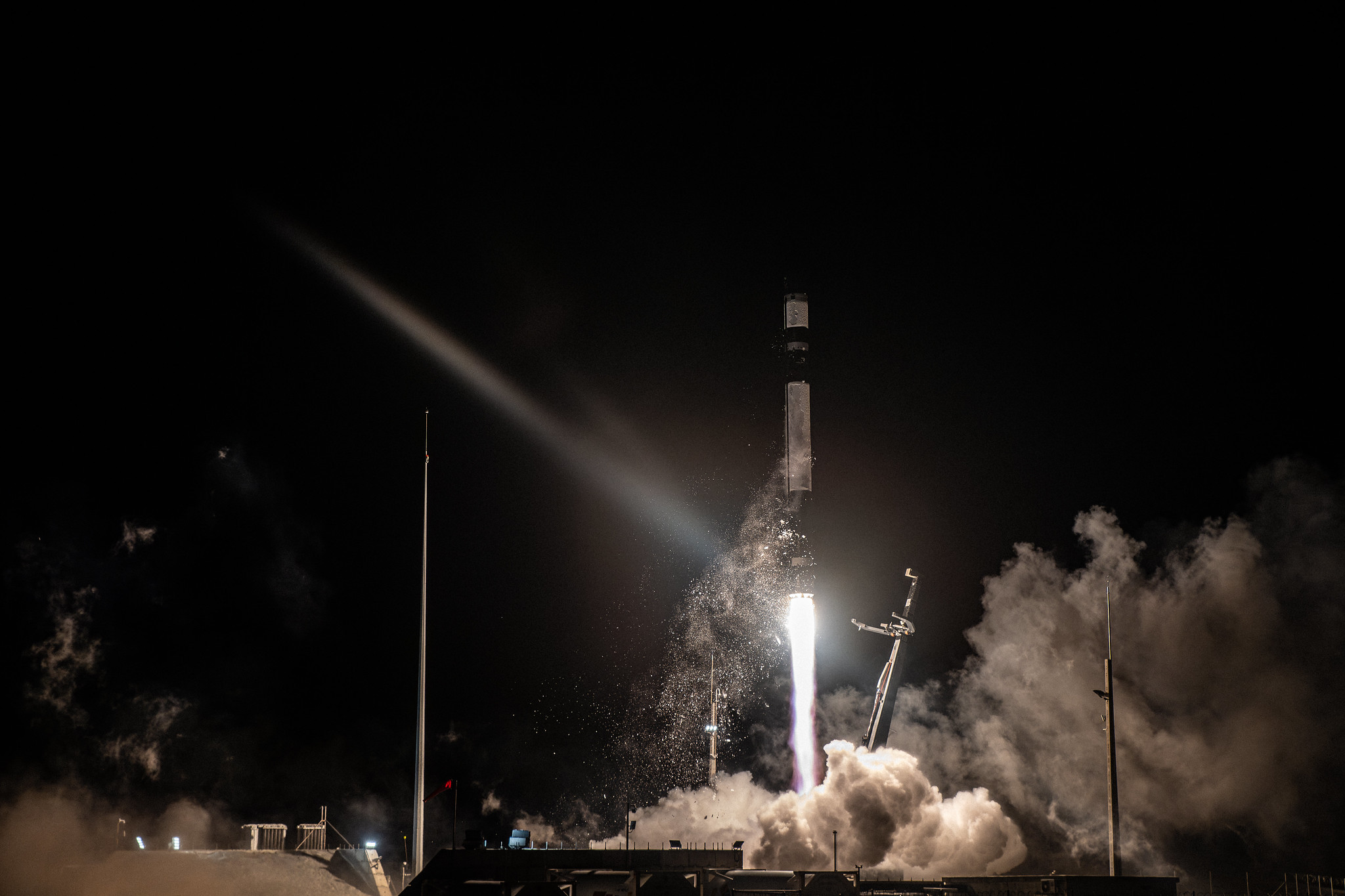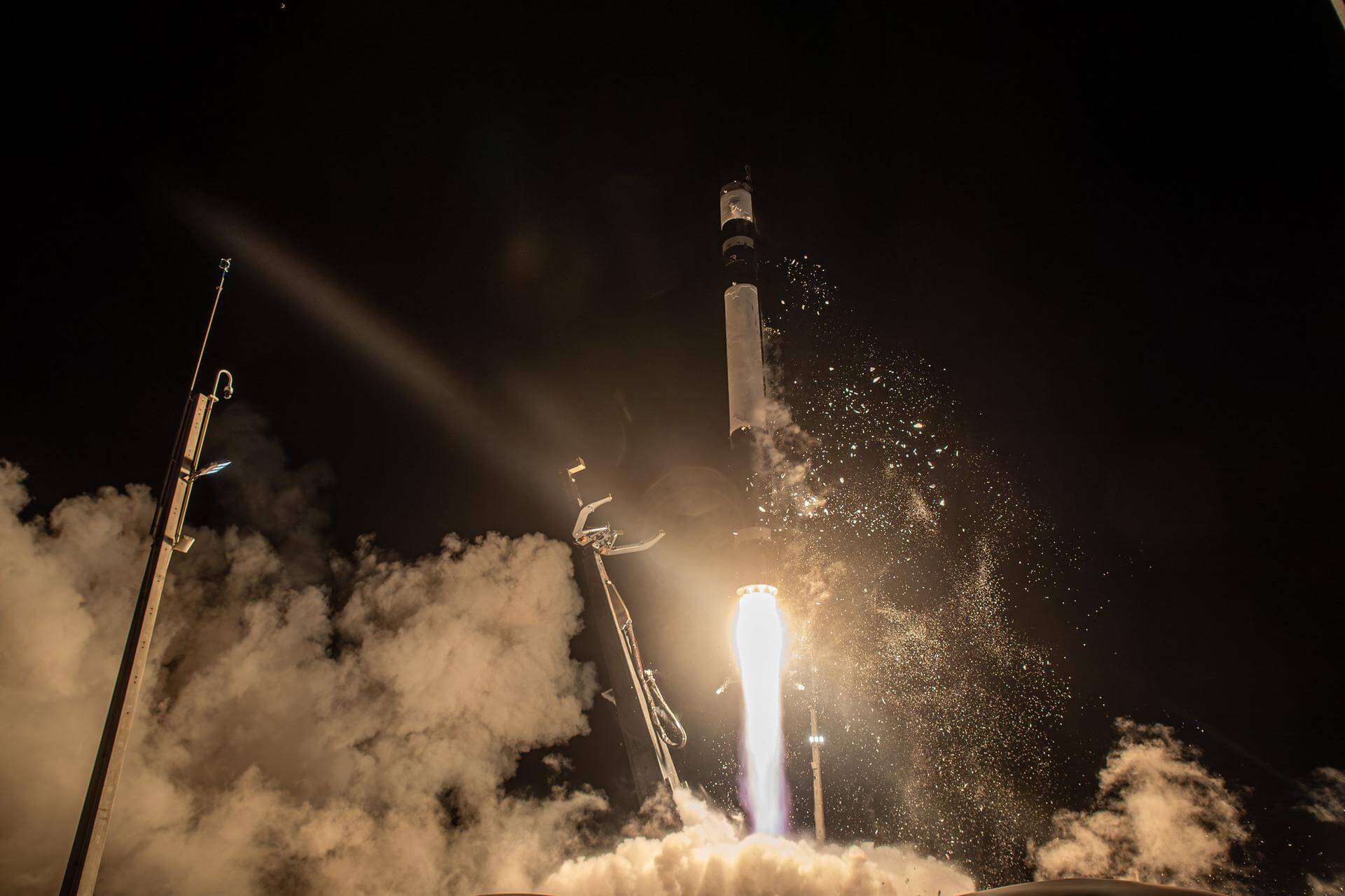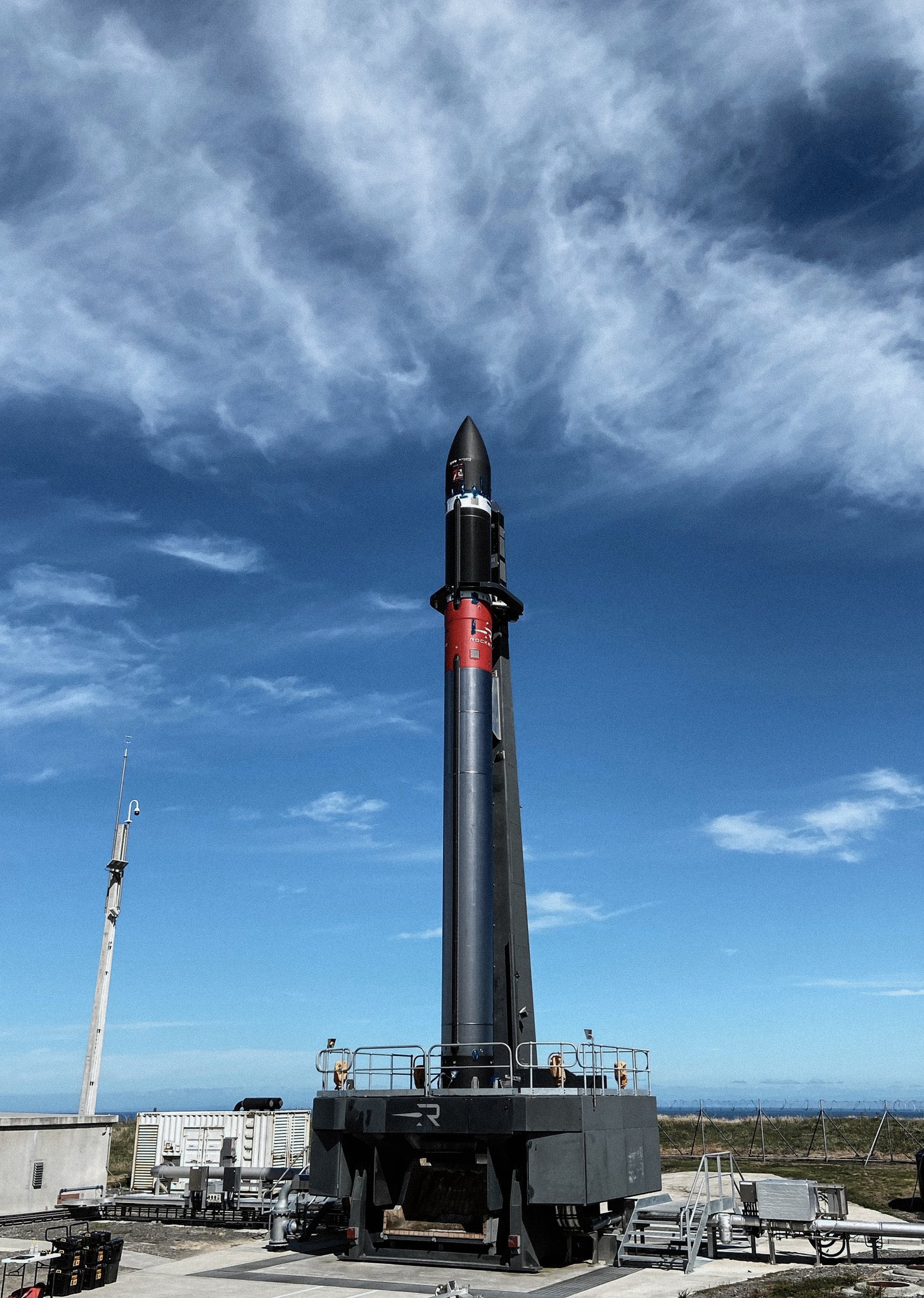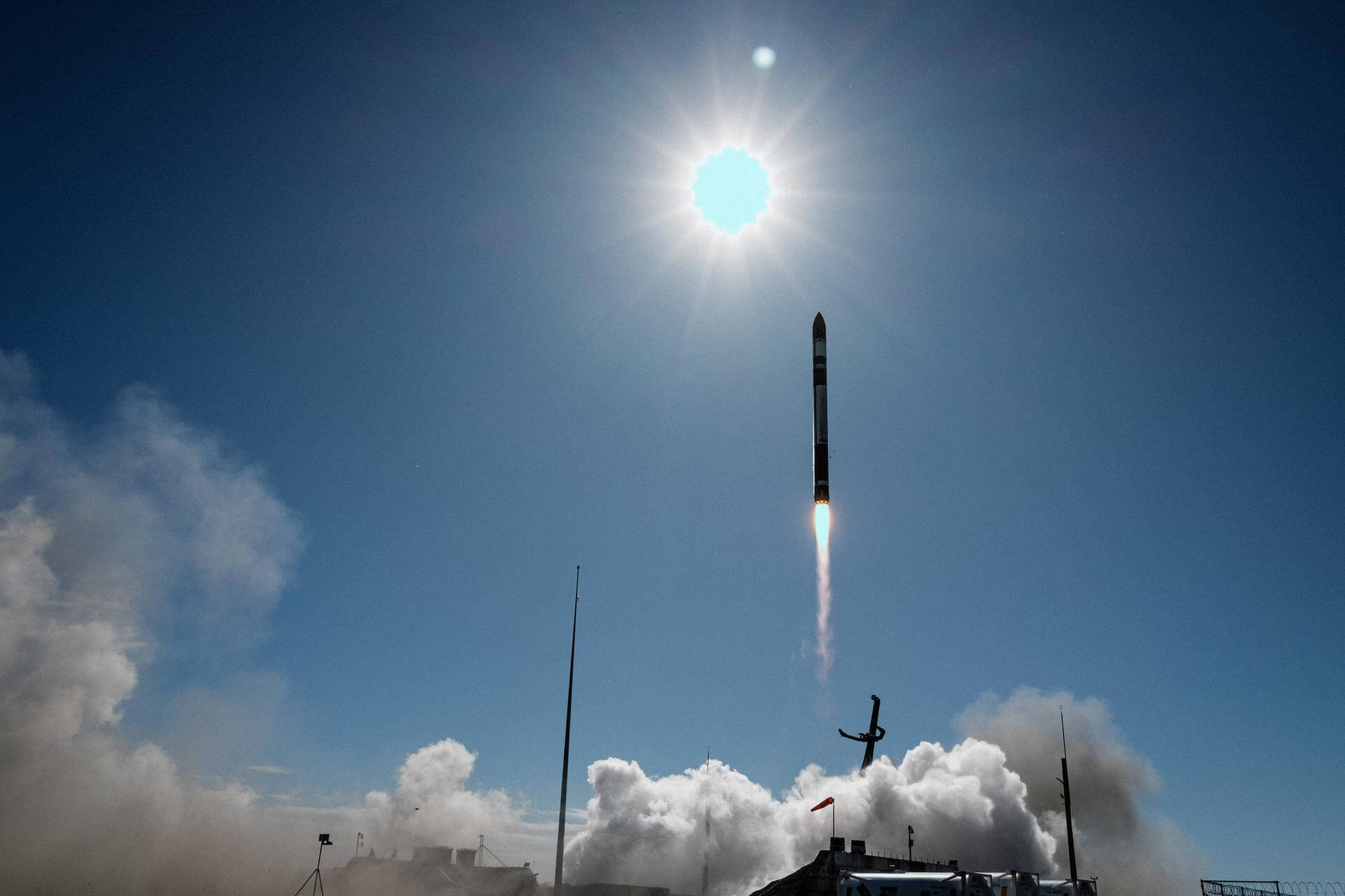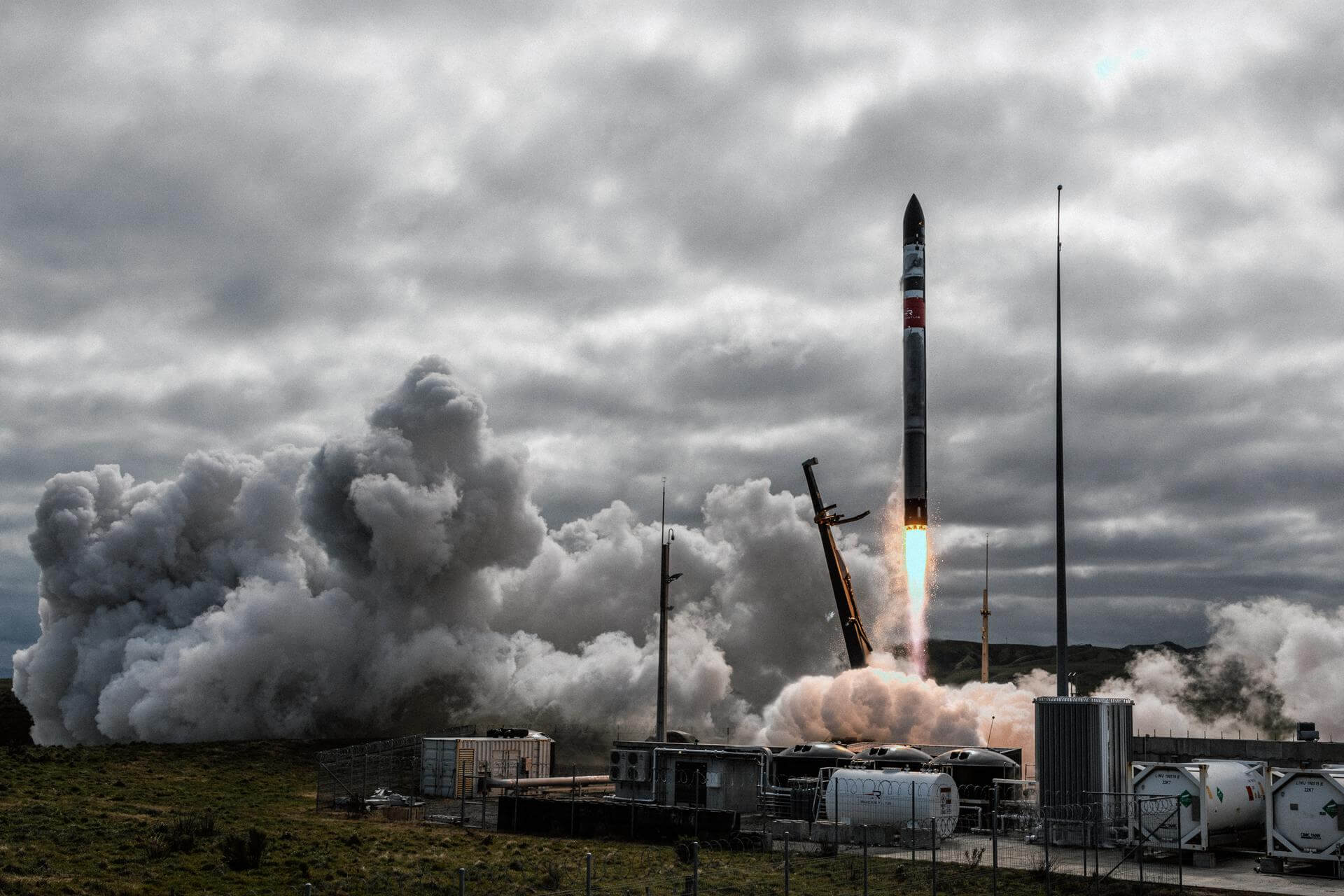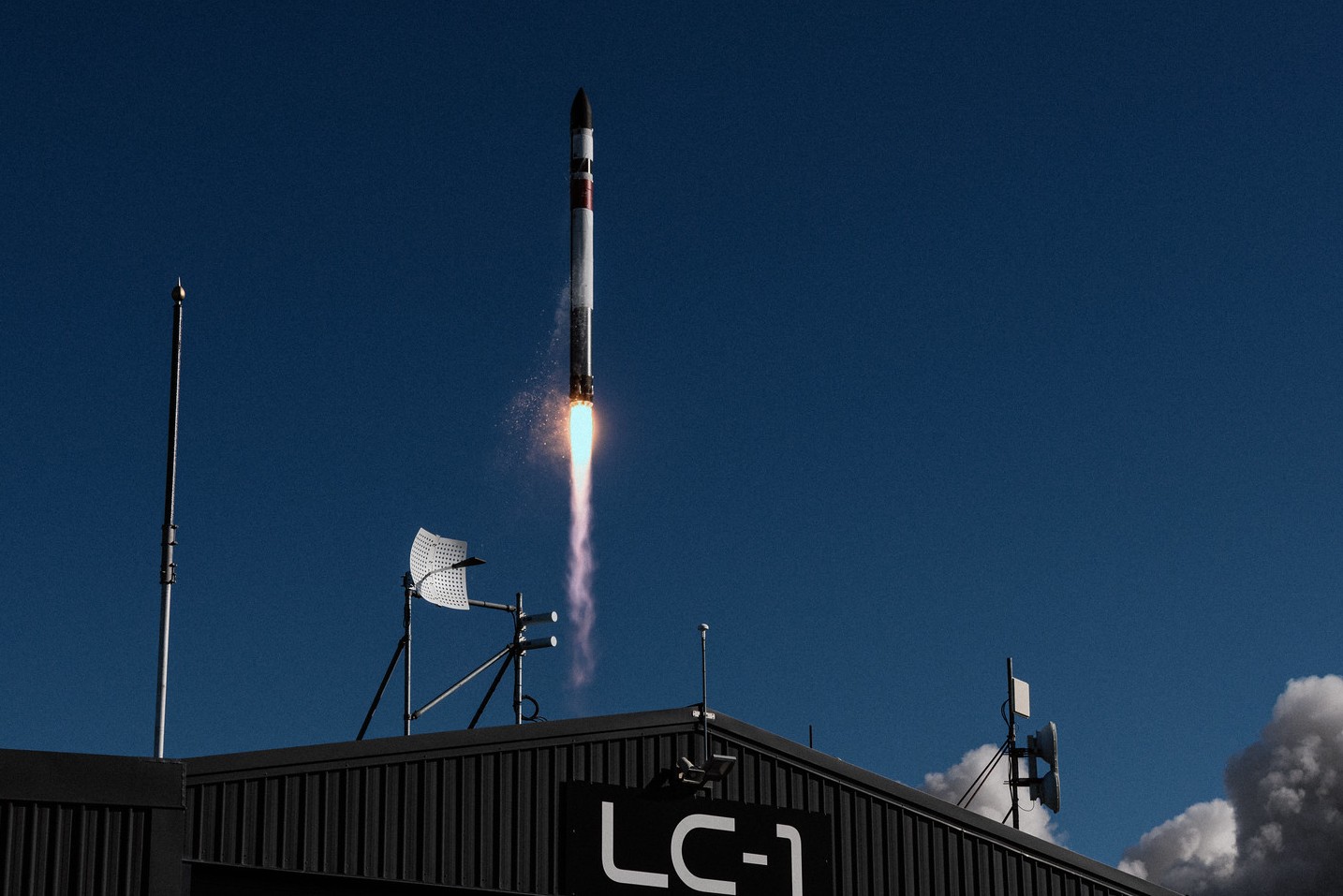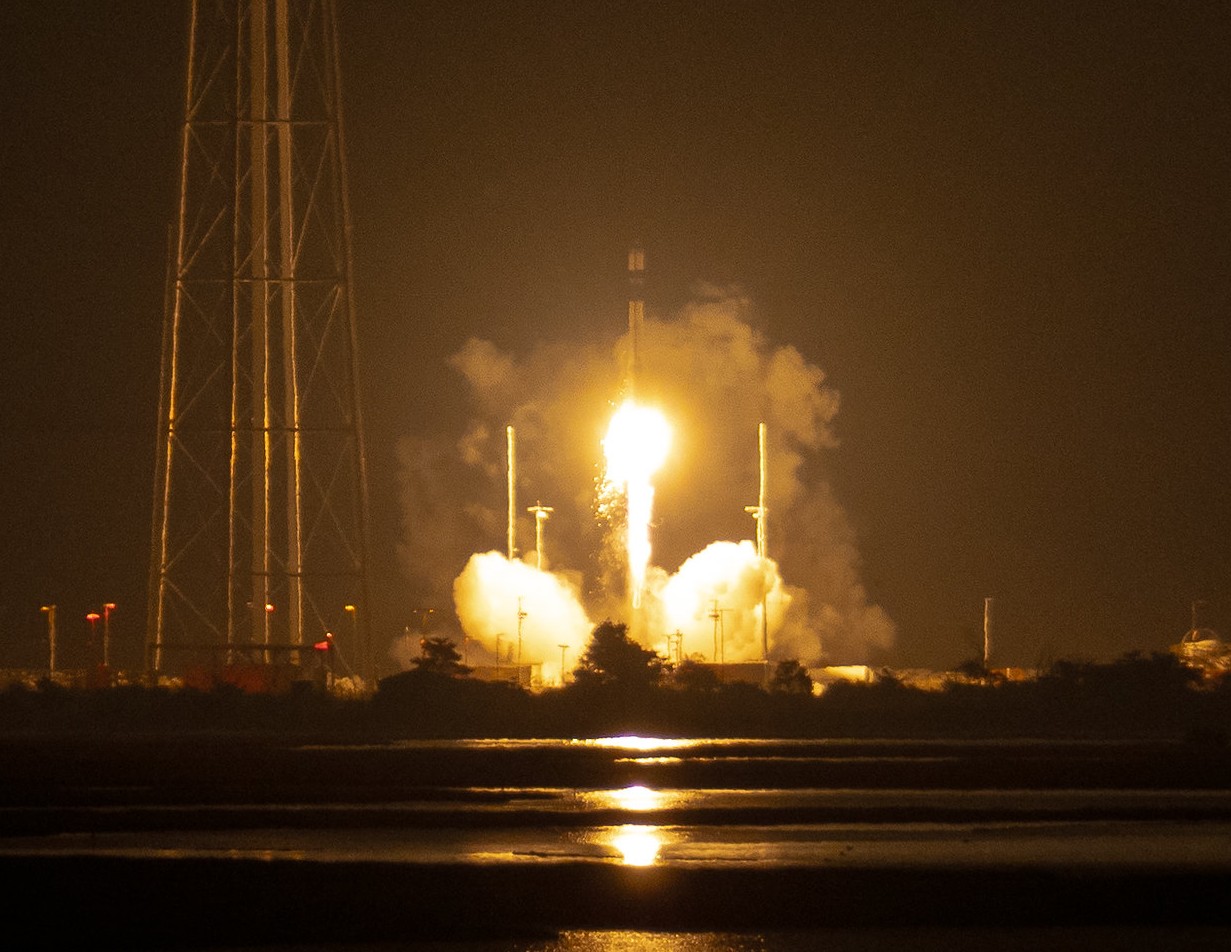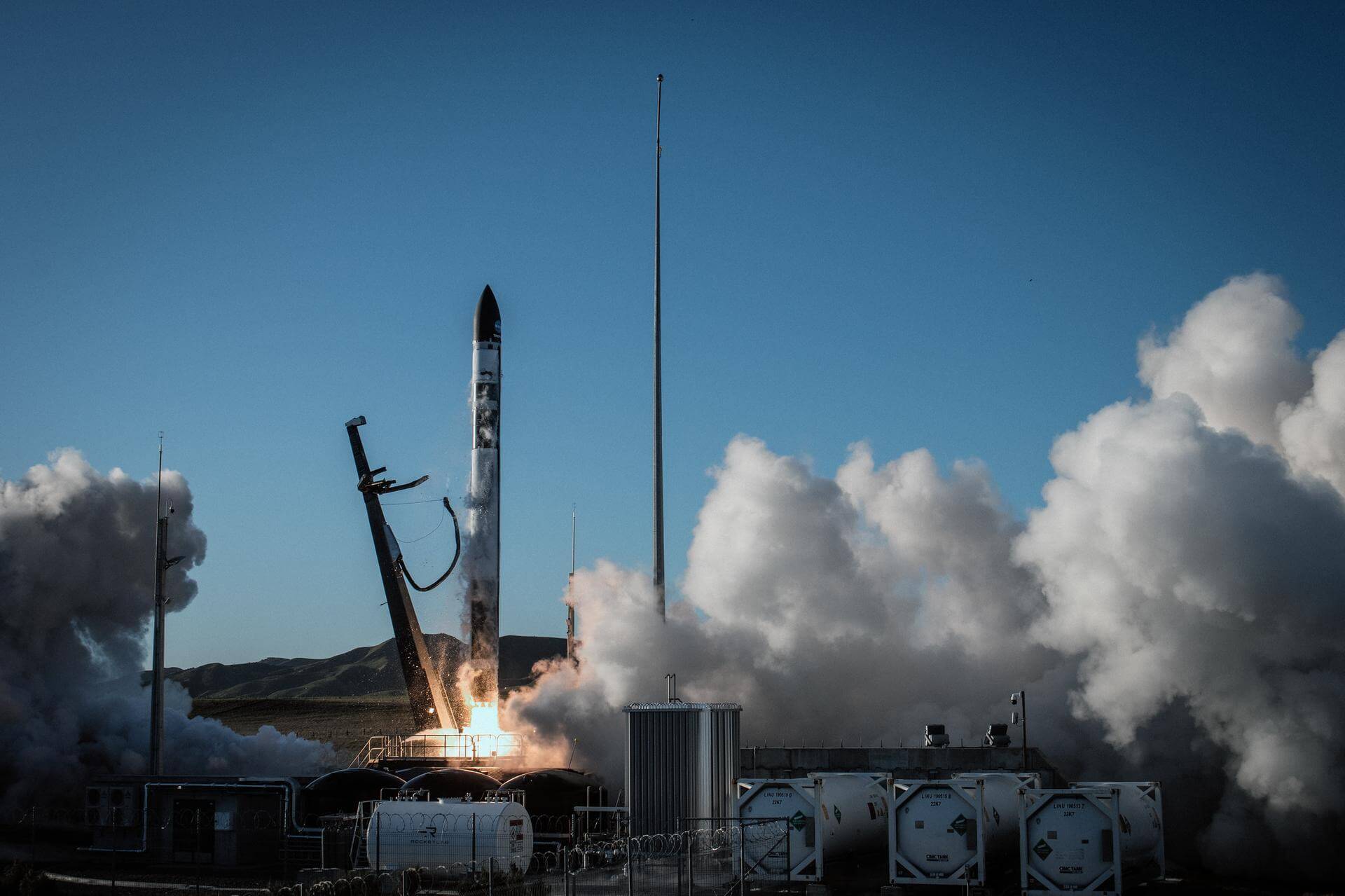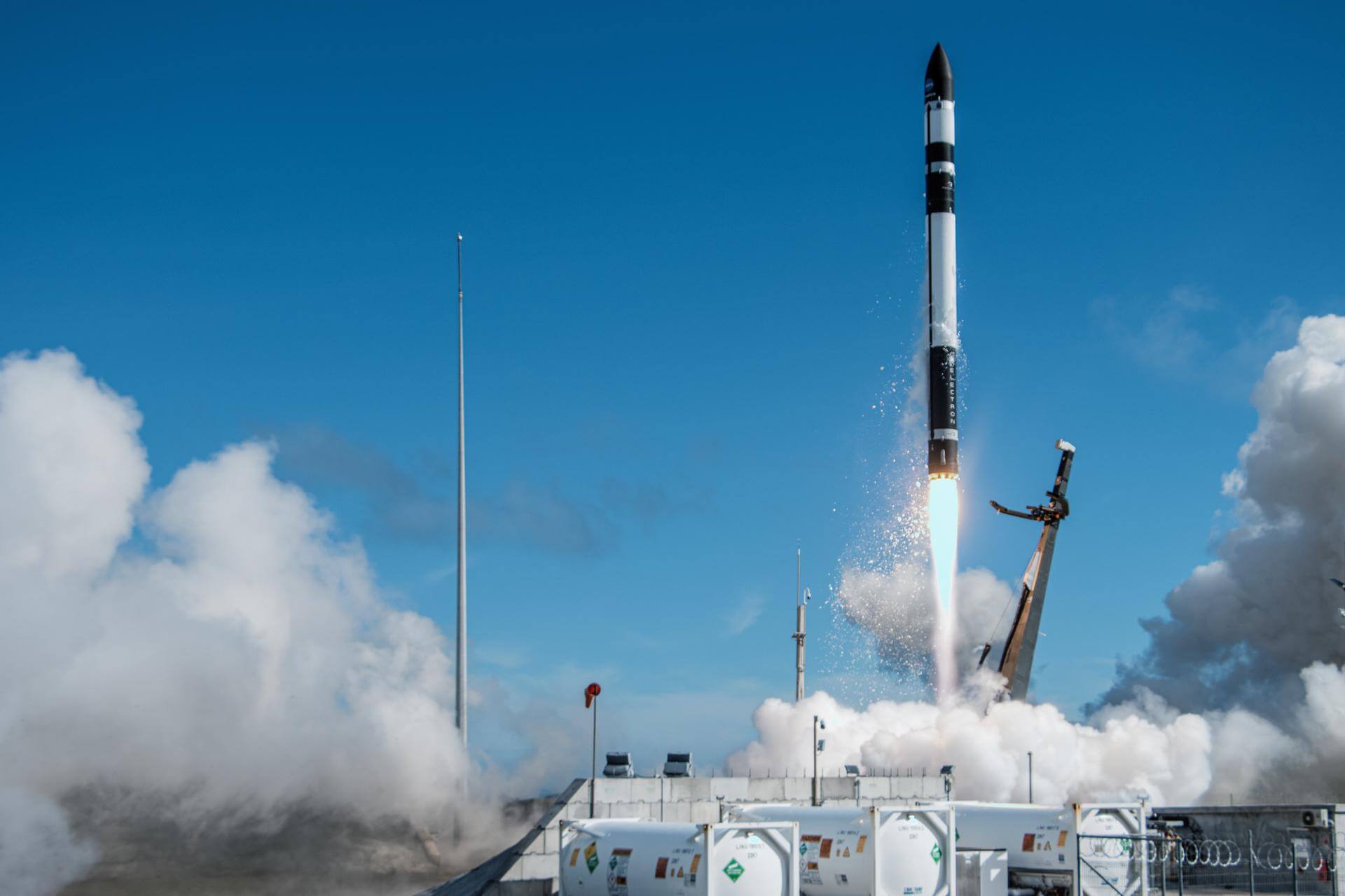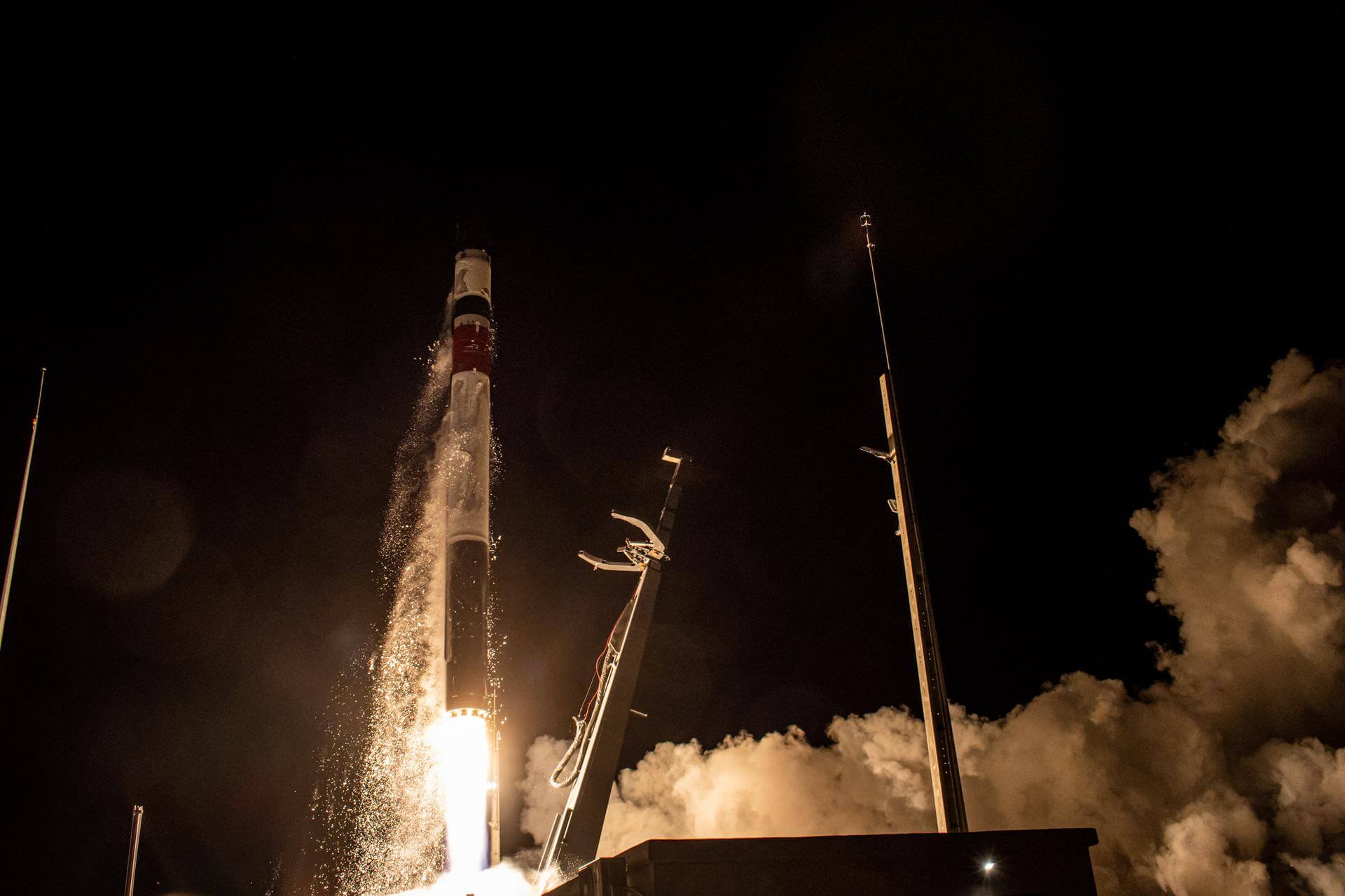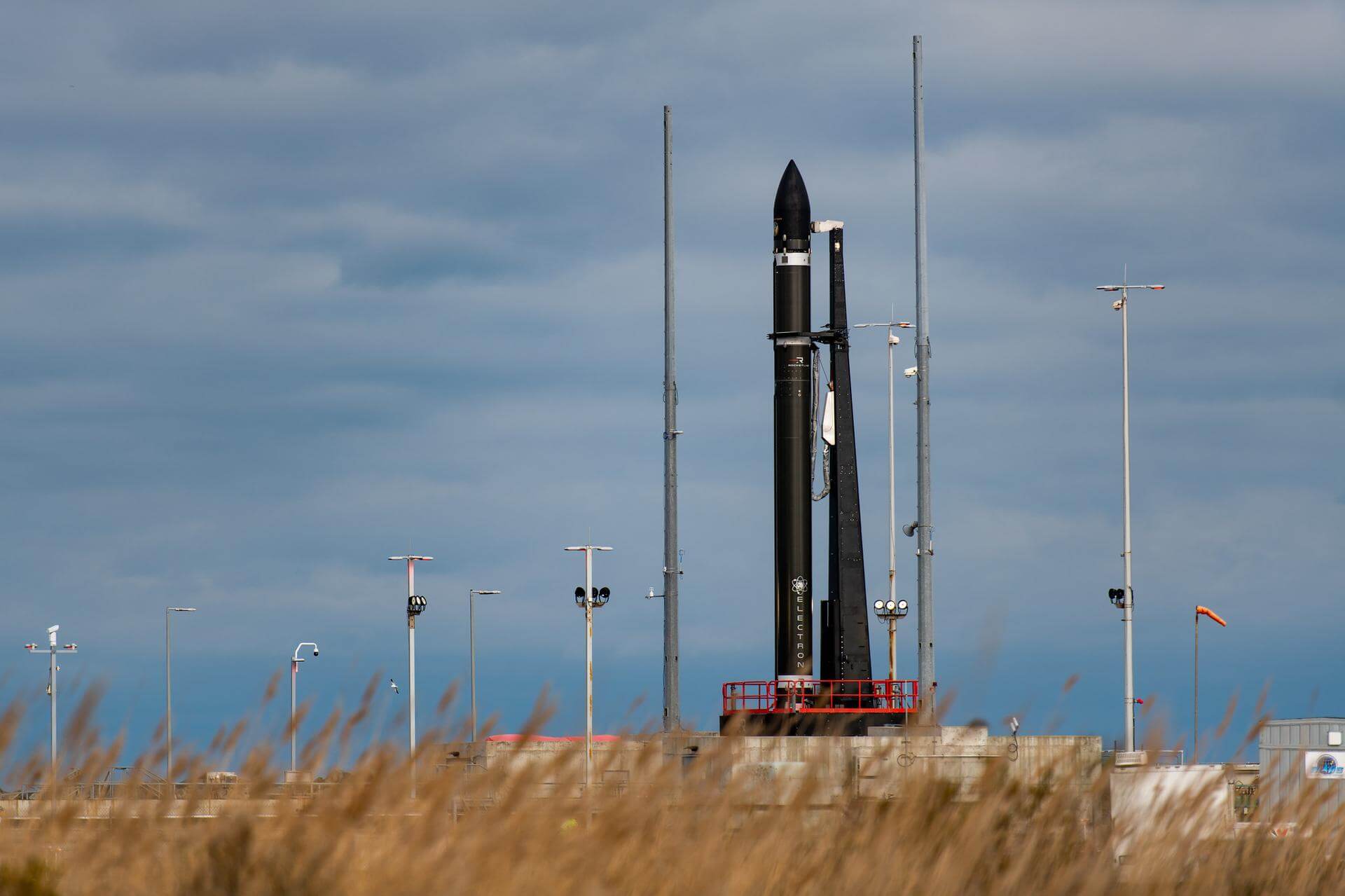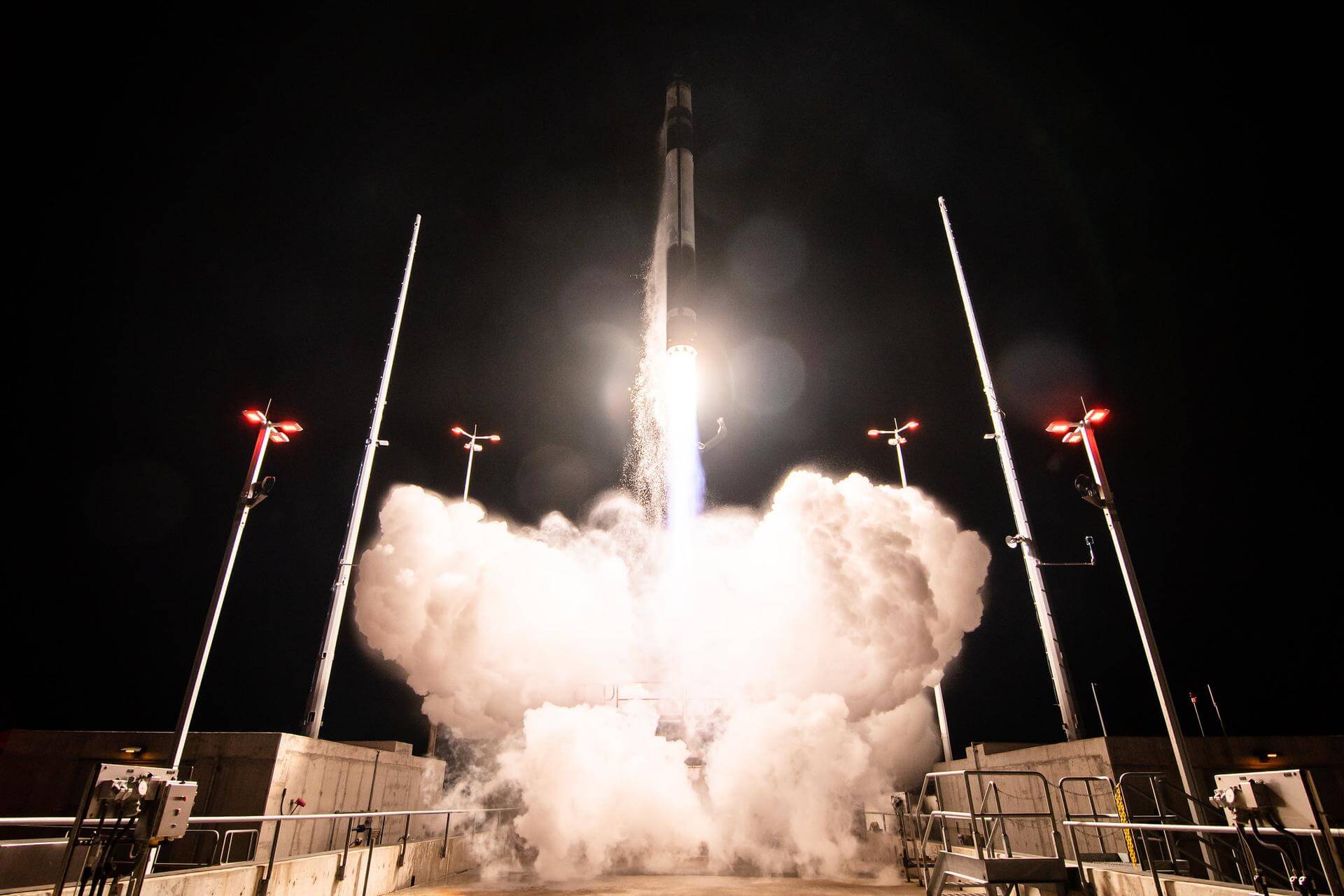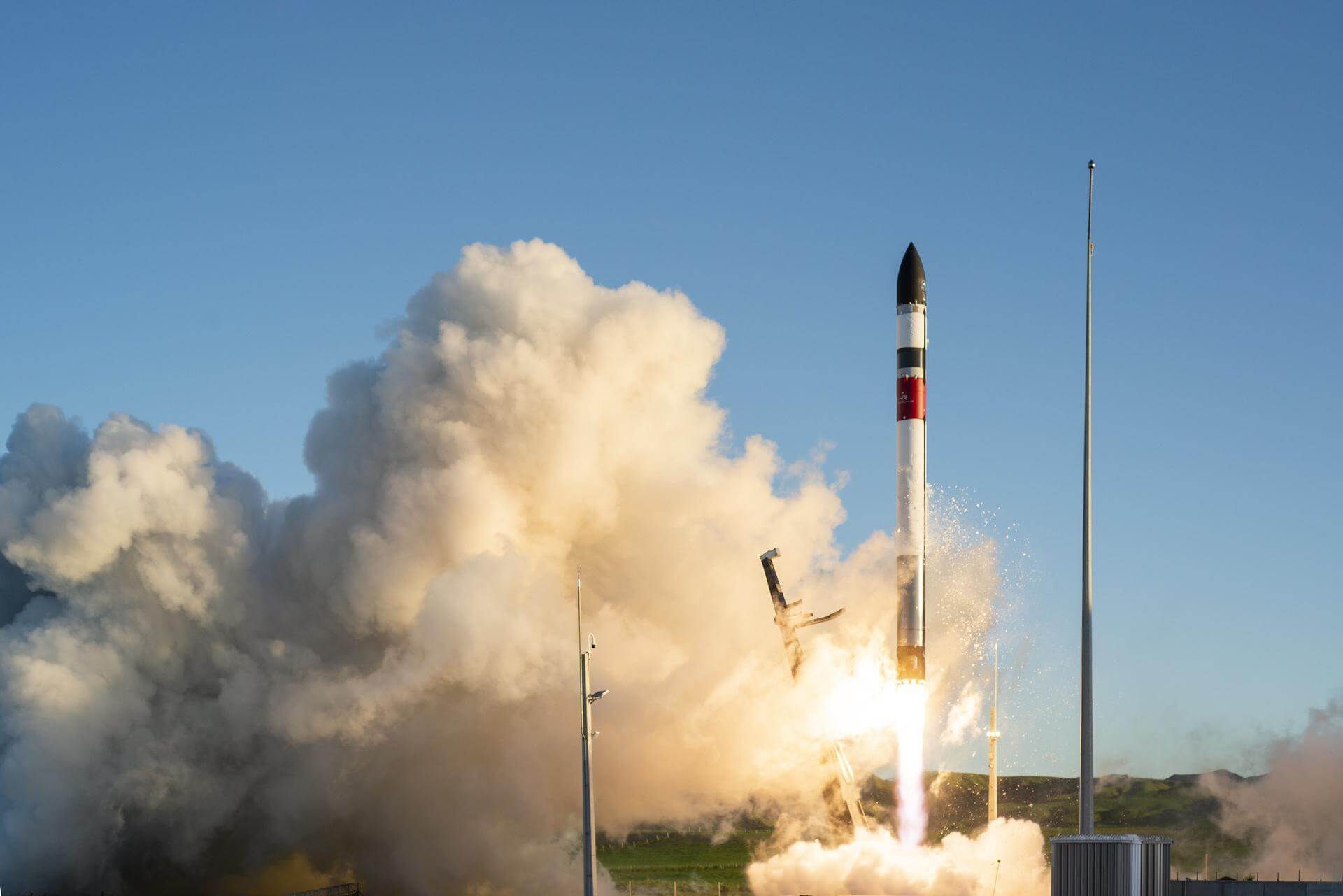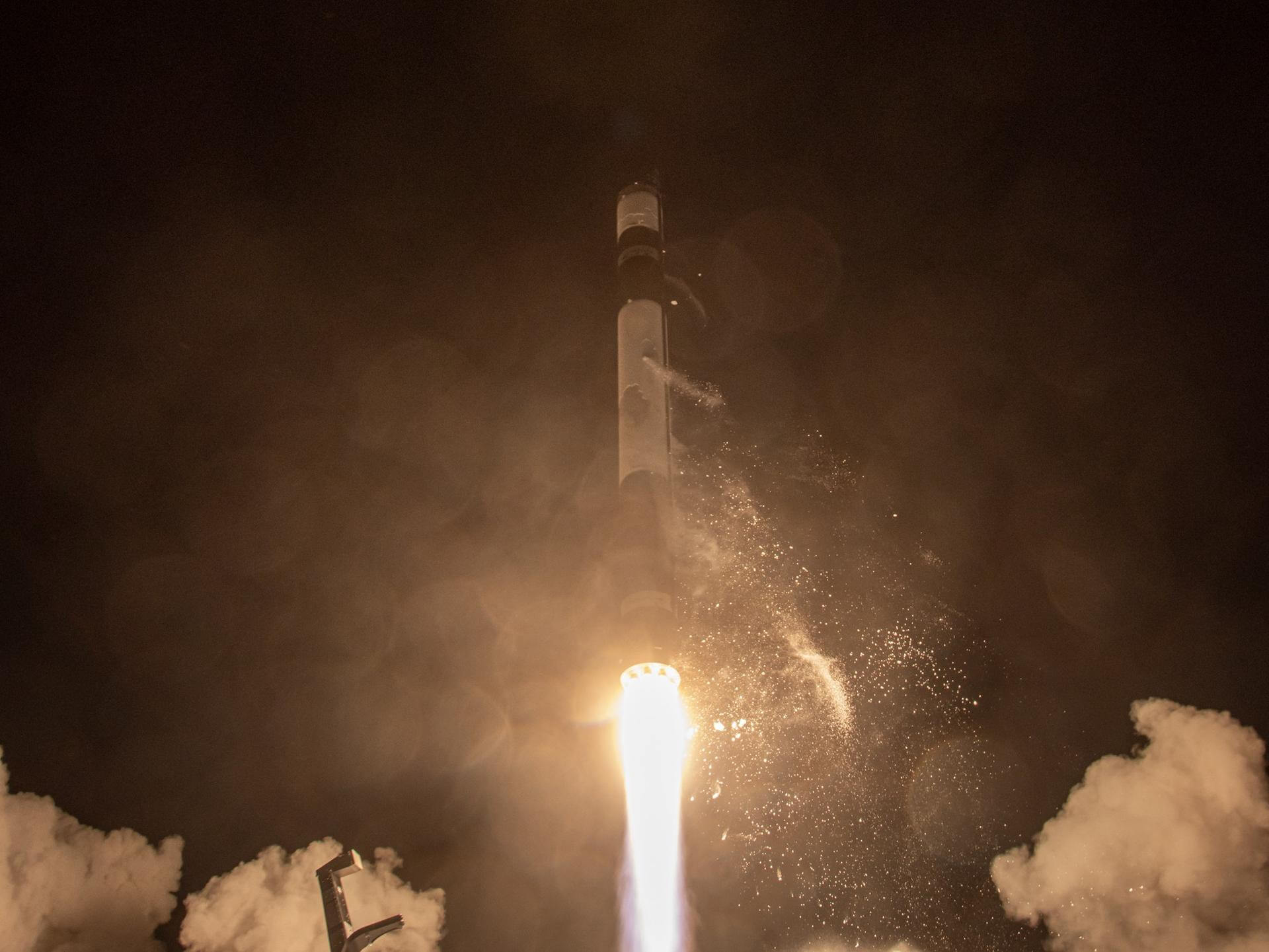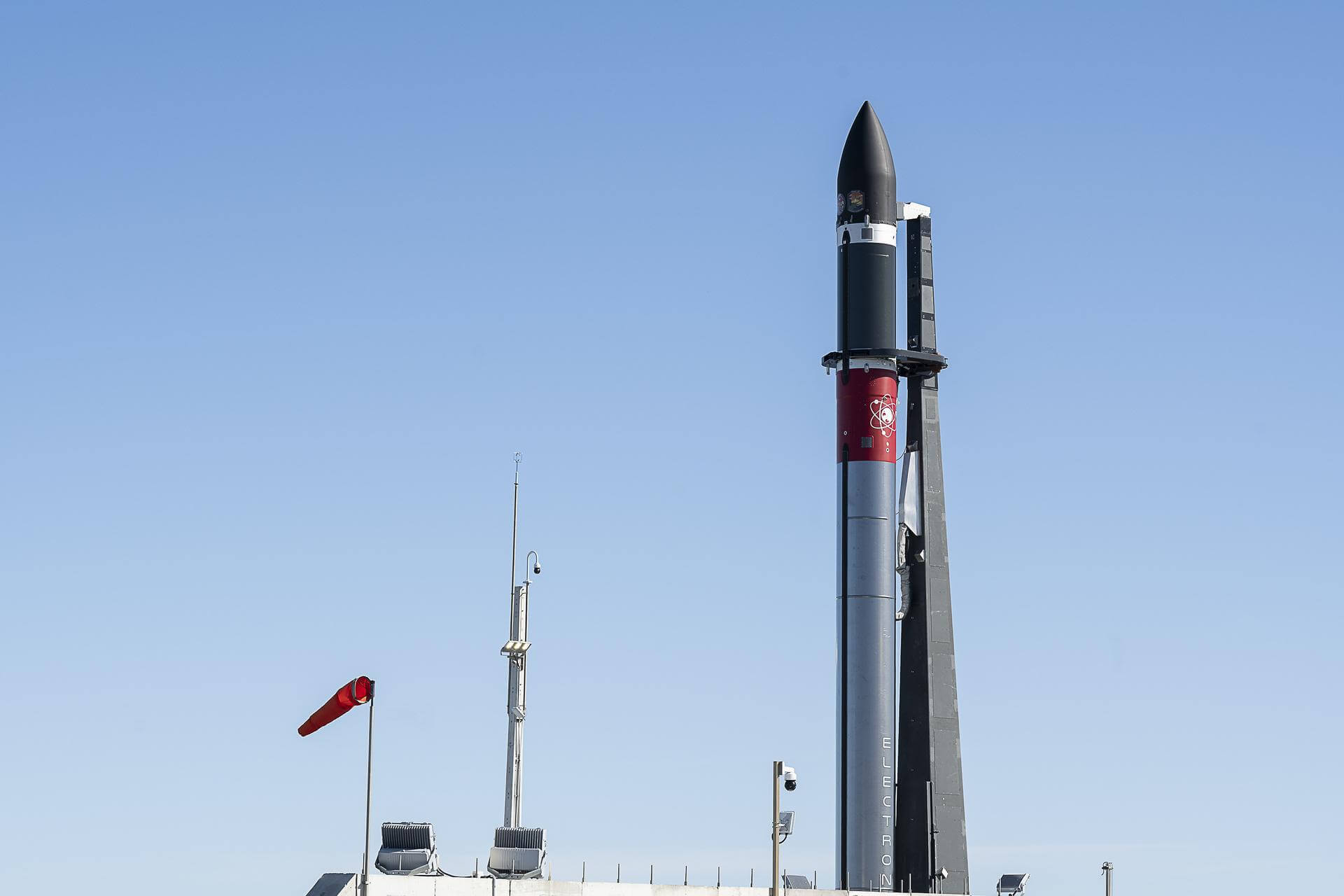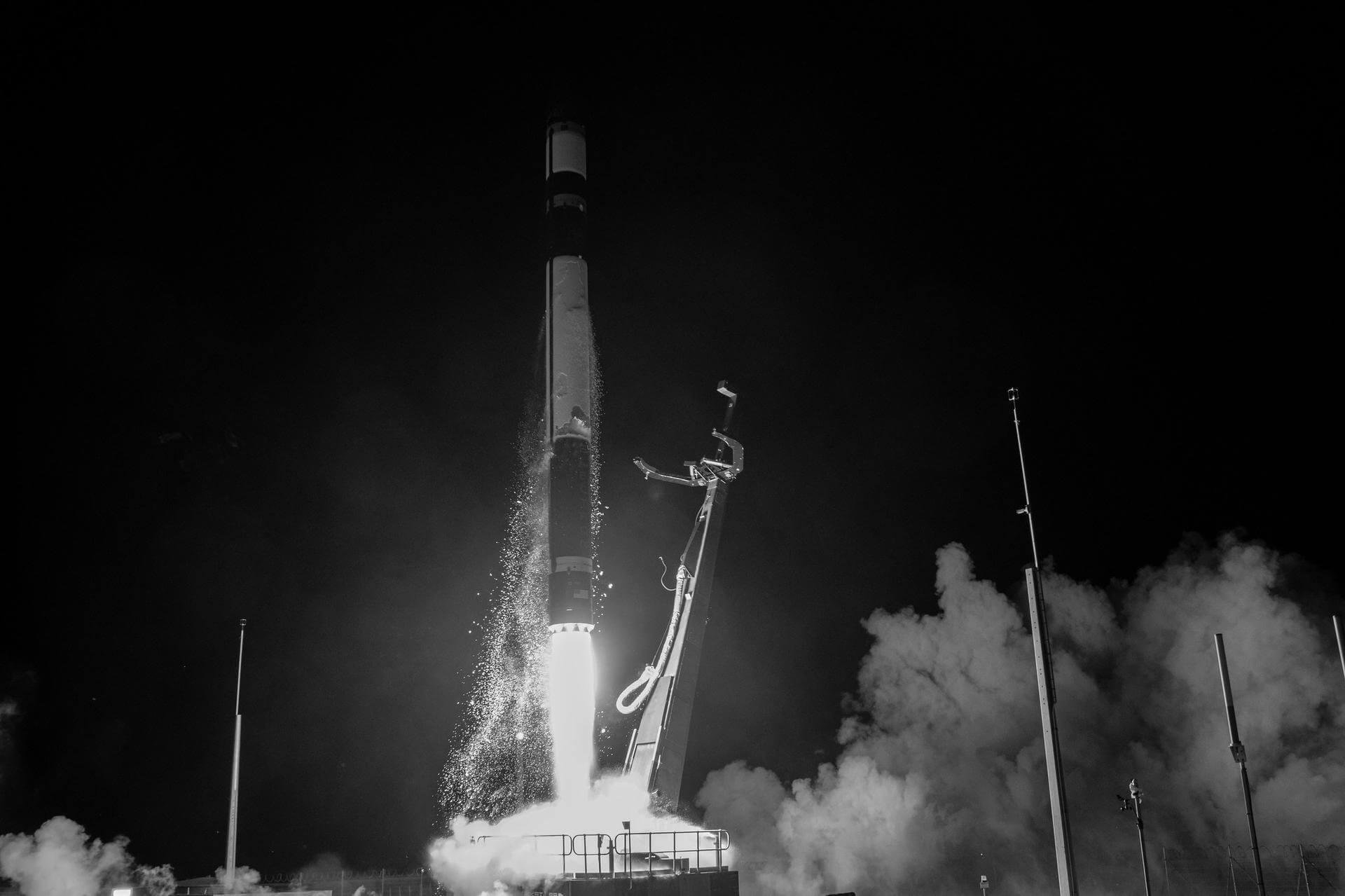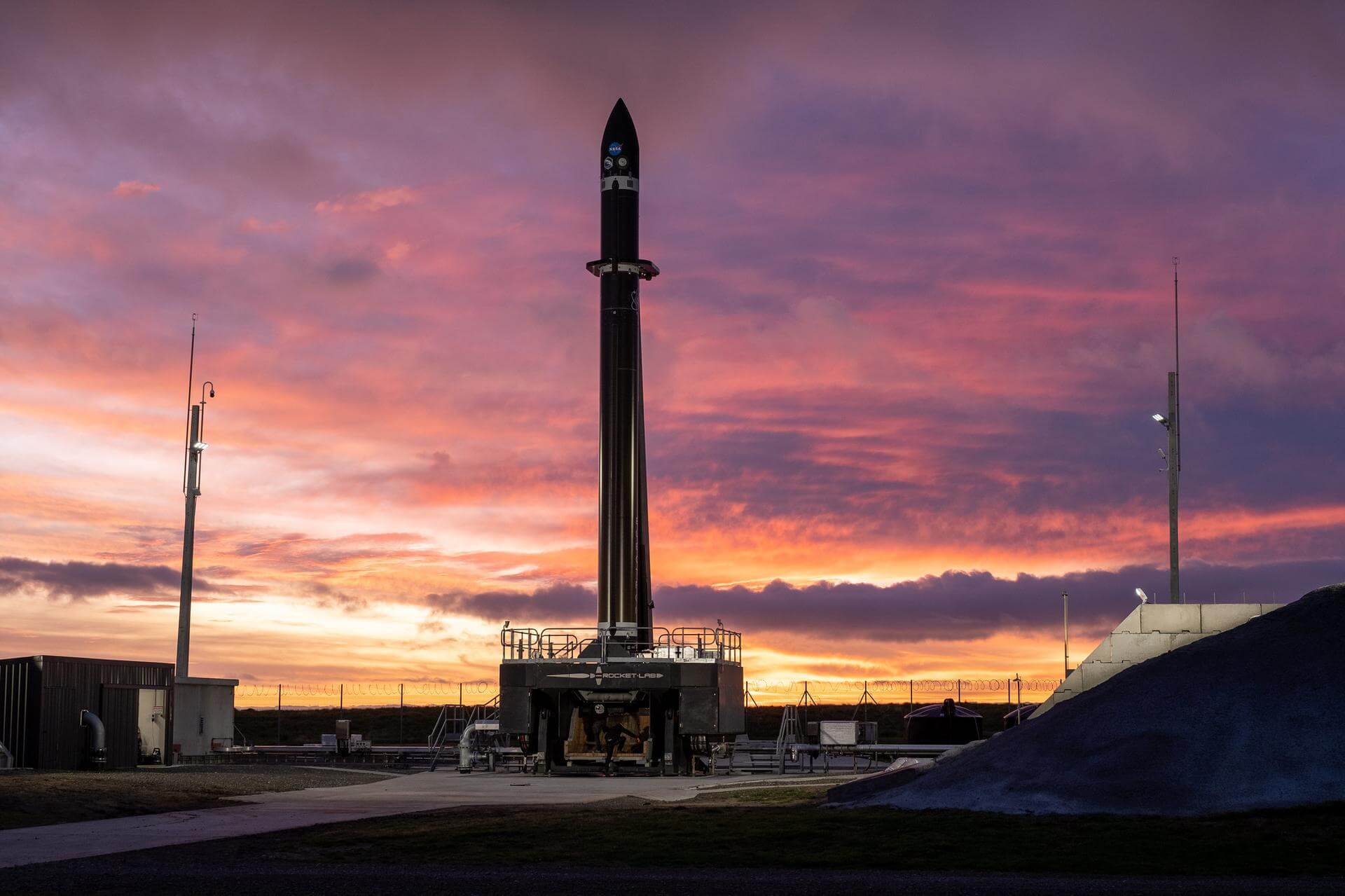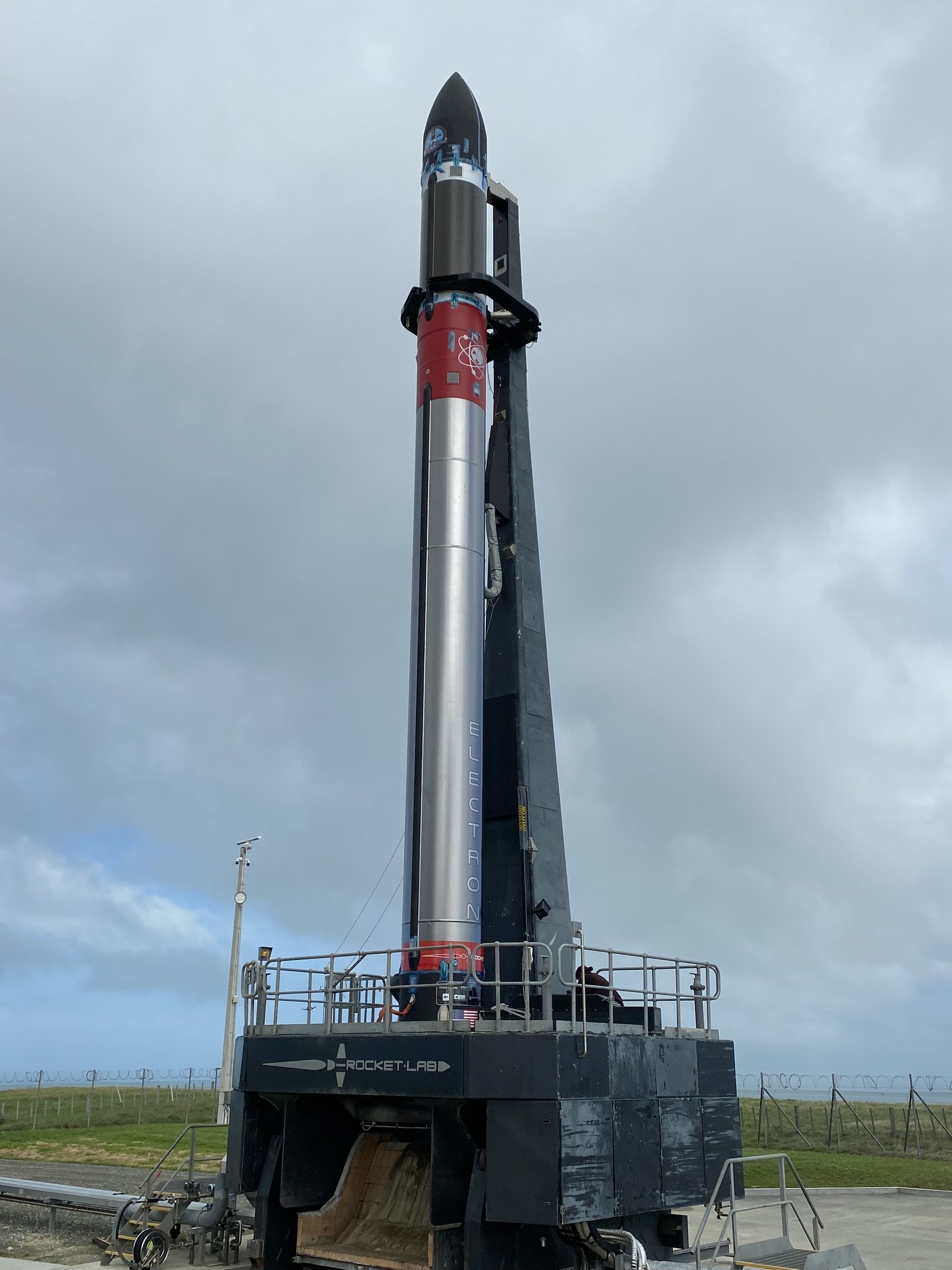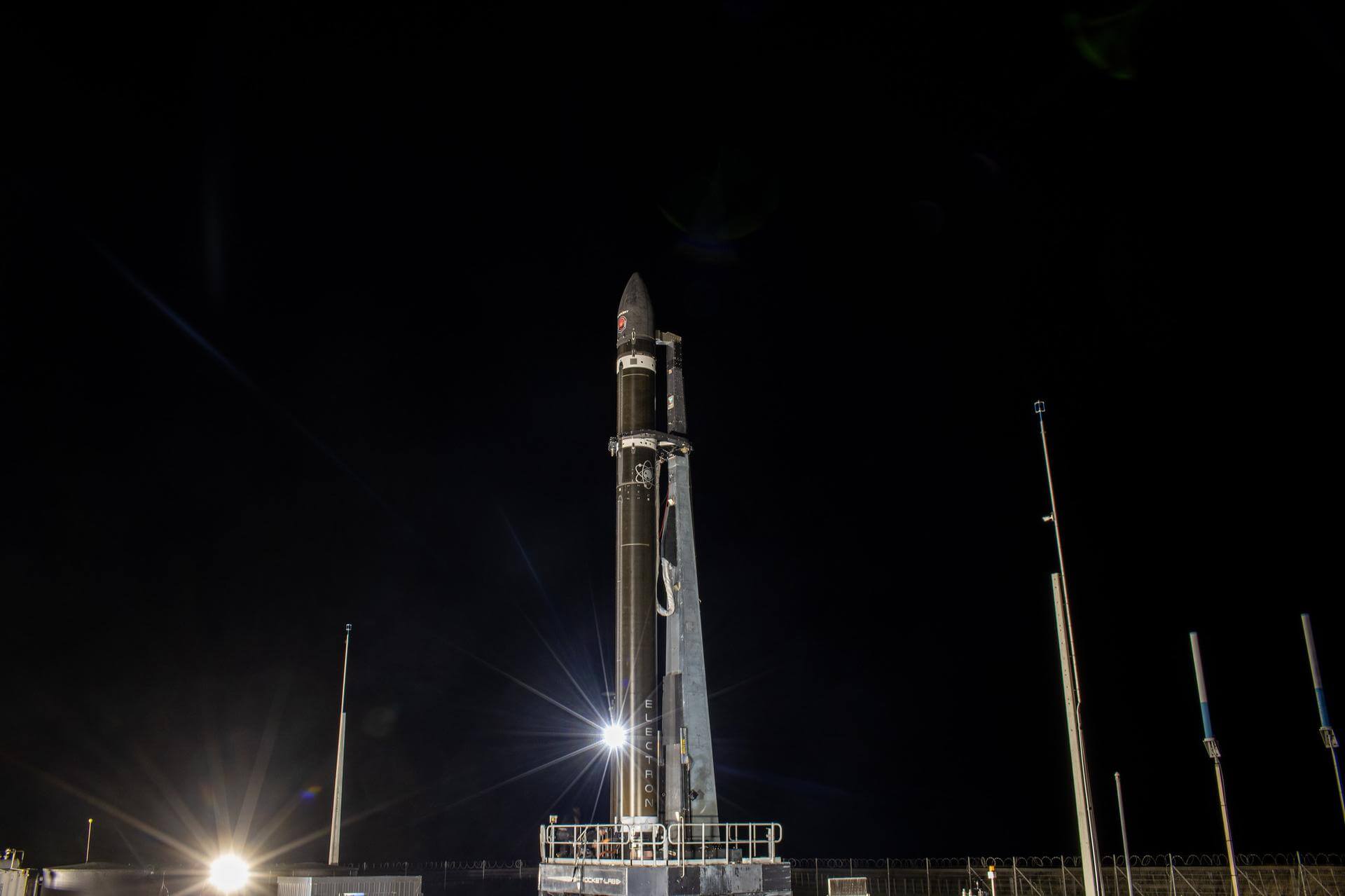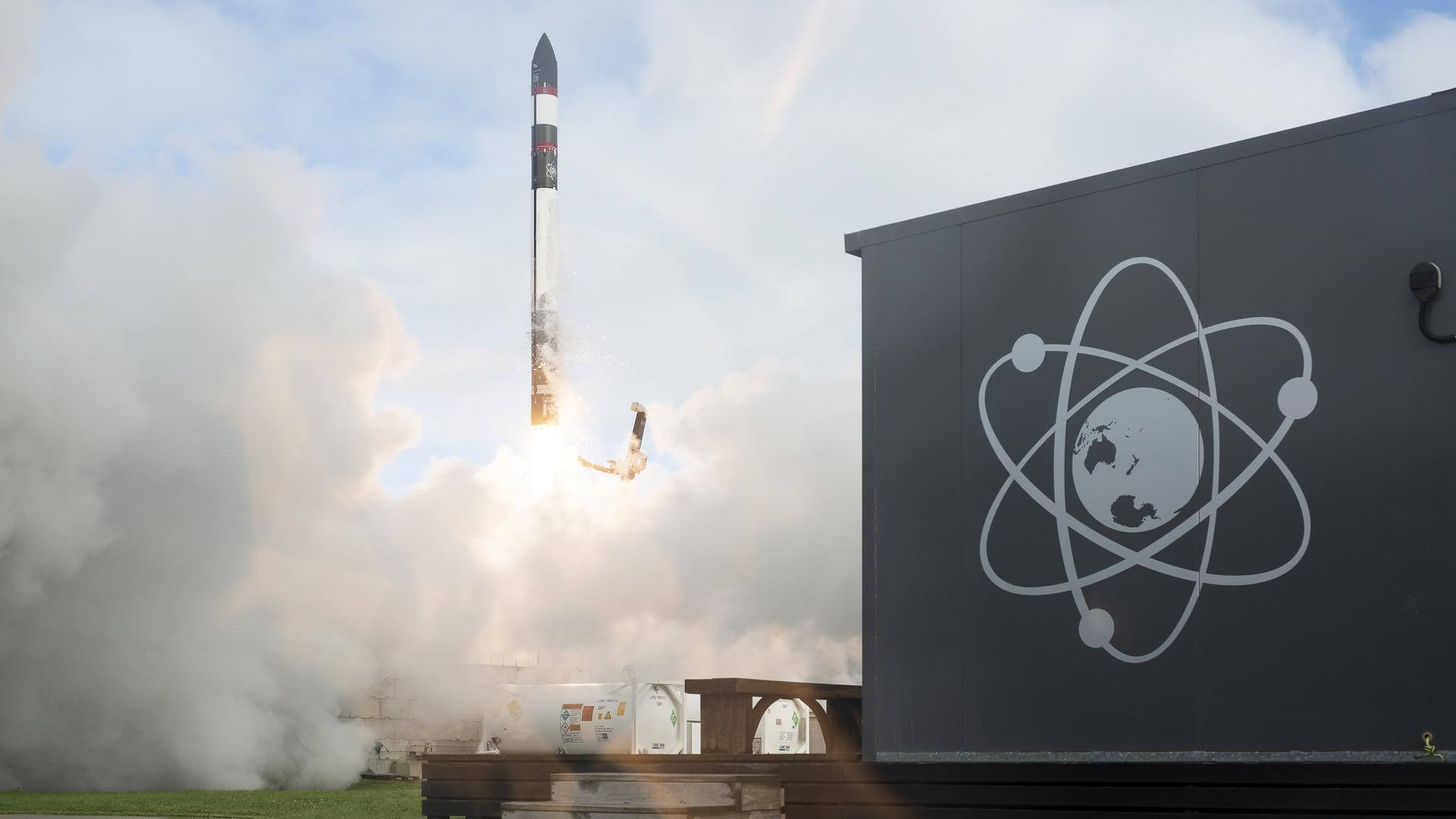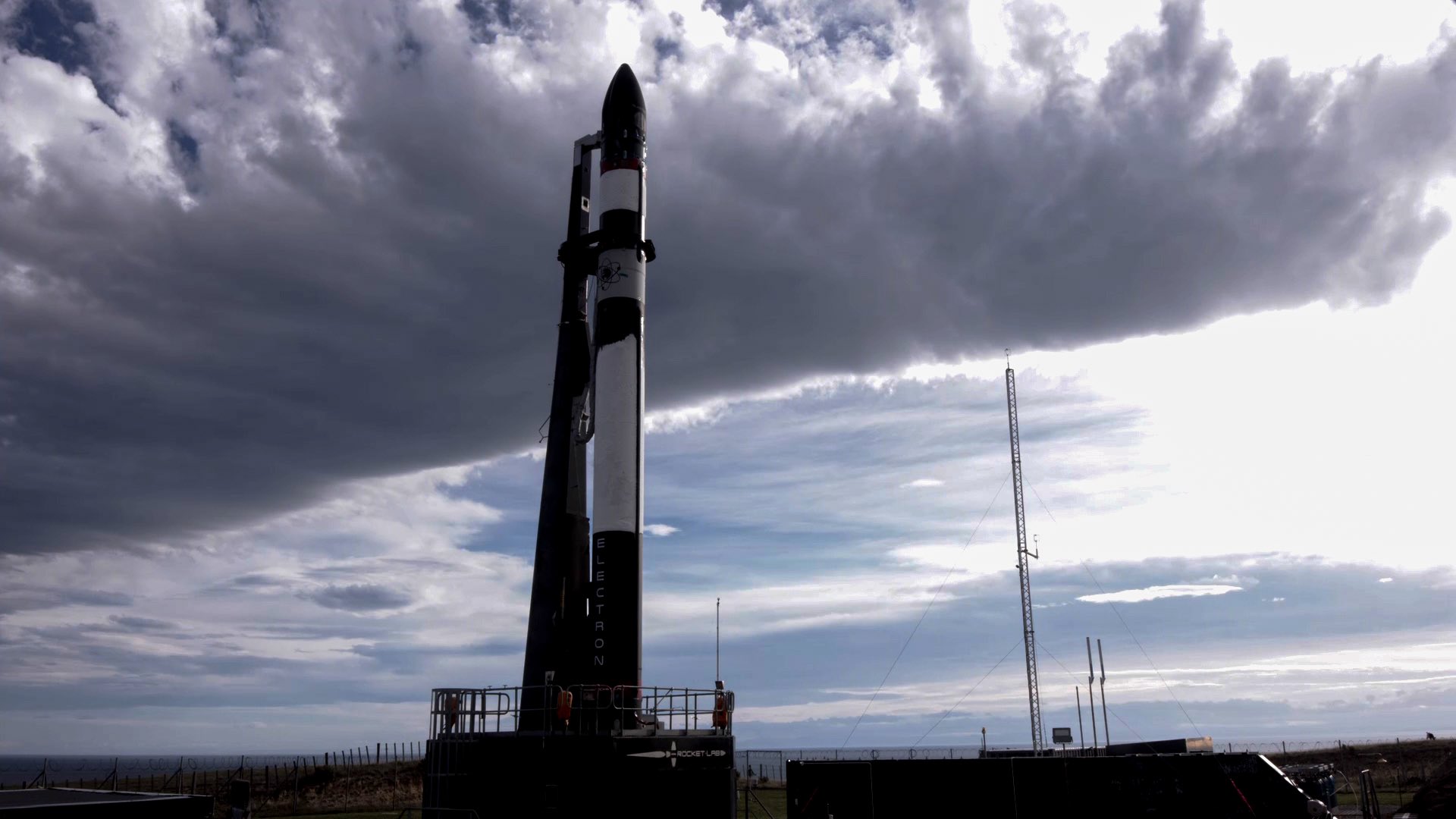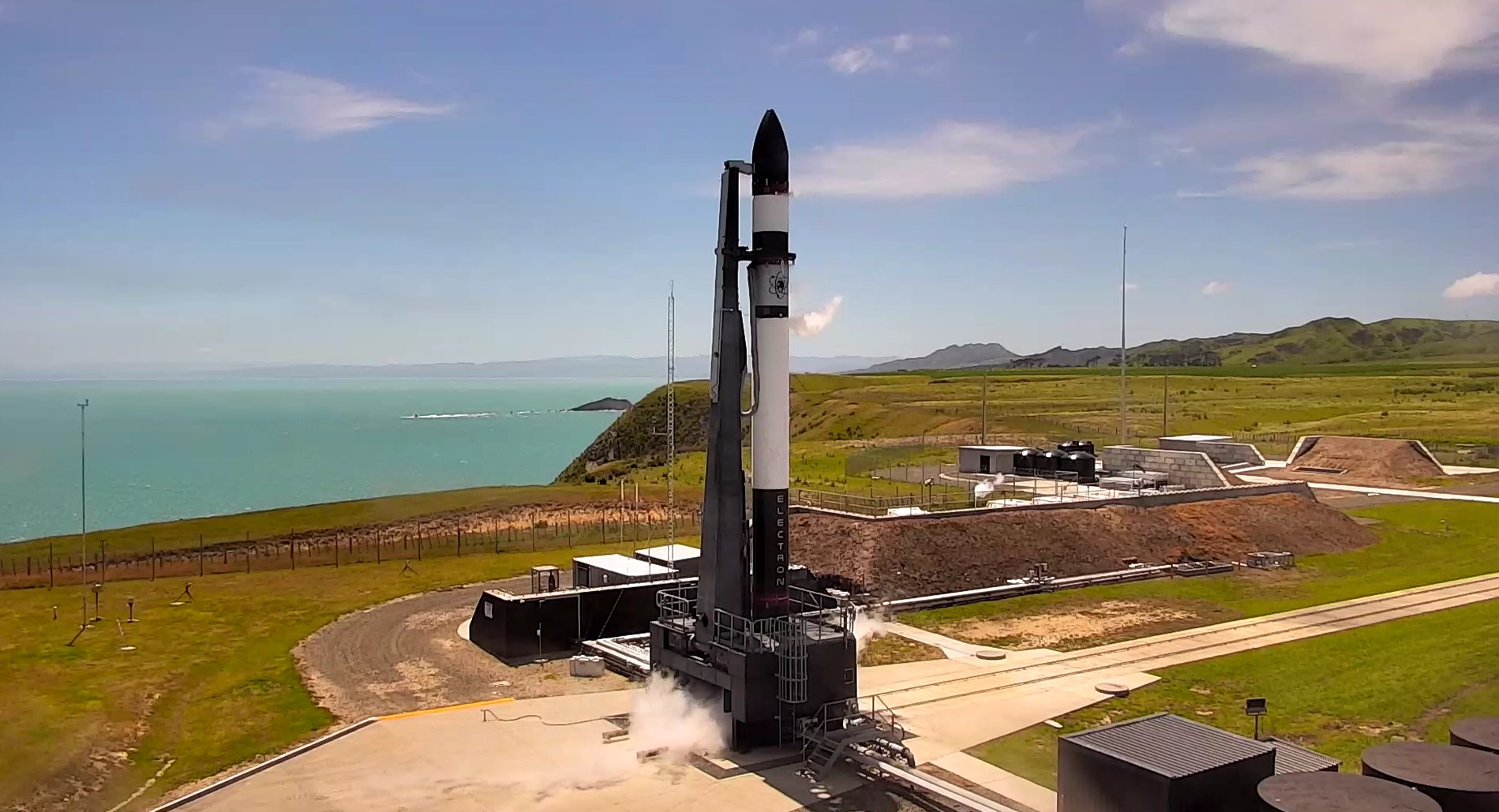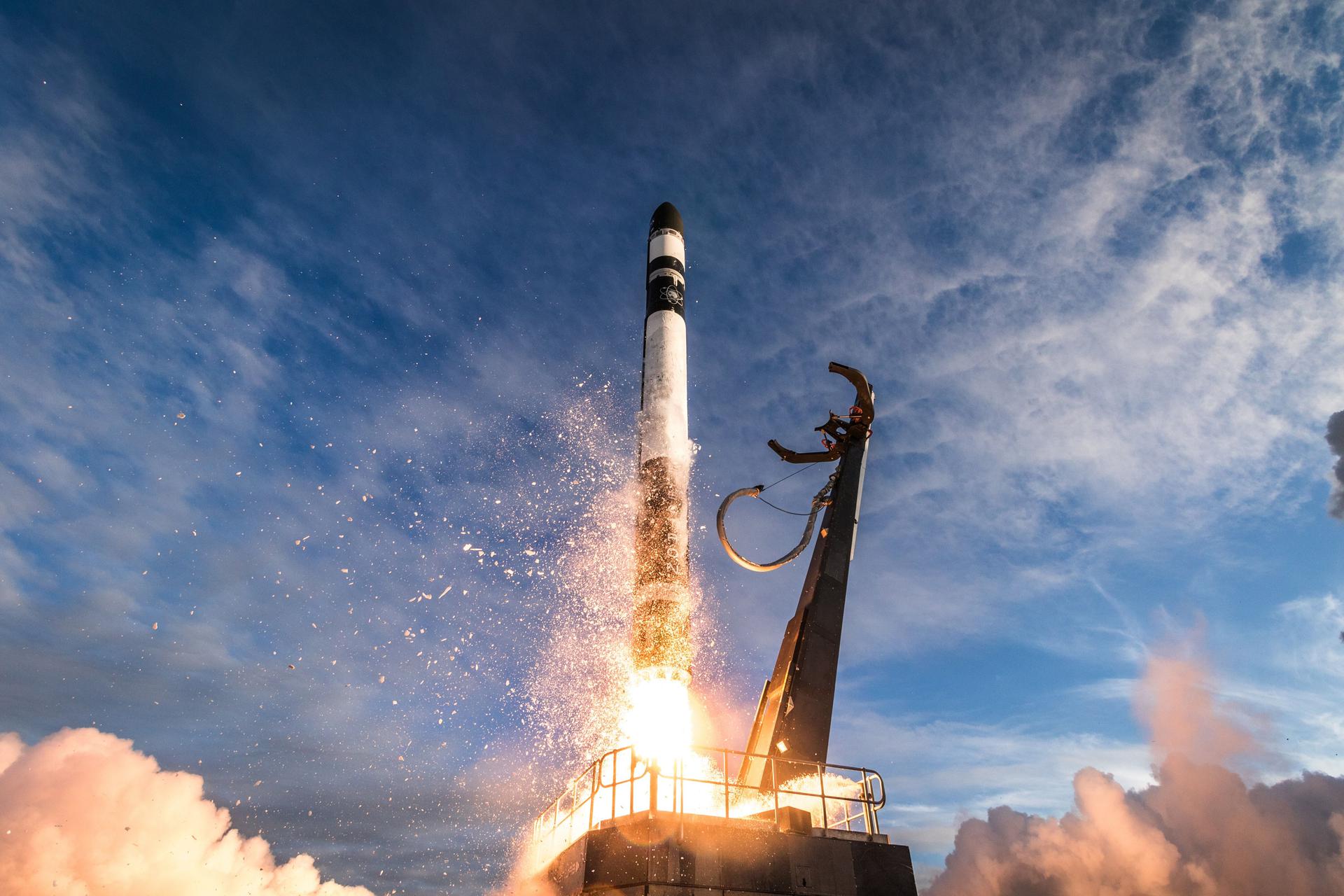
Electron
ActiveRocket Lab (RL)
May 25, 2017
Description
Electron is a two-stage orbital expendable launch vehicle (with an optional third stage) developed by the American aerospace company Rocket Lab. Electron is a small-lift launch vehicle designed to launch small satellites and cubesats to sun-synchronous orbit and low earth orbit. The Electron is the first orbital class rocket to use electric-pump-fed engines, powered by the 9 Rutherford engines on the first stage. It is also used as a suborbital testbed (called HASTE) for hypersonics research.
Specifications
-
Minimum Stage
2 -
Max Stage
3 -
Length
18.0 m -
Diameter
1.2 m -
Fairing Diameter
1.2 m -
Launch Mass
13.0 T -
Thrust
162.0 kN
Family
-
Name
Electron -
Family
― -
Variant
― -
Alias
― -
Full Name
Electron
Payload Capacity
-
Launch Cost
$6000000 -
Low Earth Orbit
300.0 kg -
Geostationary Transfer
Orbit
― -
Direct Geostationary
― -
Sun-Synchronous Capacity
225.0 kg
Rocket Lab
Commercial
CEO: Peter Beck
RL 2006Rocket Lab is an American aerospace manufacturer with a wholly owned New Zealand subsidiary. The company develops lightweight, cost-effective commercial rocket launch services. The Electron Program was founded on the premise that small payloads such as CubeSats require dedicated small launch vehicles and flexibility not currently offered by traditional rocket systems. Its rocket, the Electron, is a light-weight rocket and is now operating commercially. The company is also producing a variety of spacecrafts and spacecrafts components.
Upcoming Spaceflights
Electron | The Cosmos Will See You Now (Open Cosmos Constellation Launch 1)
Rocket Lab | United States of AmericaRocket Lab Launch Complex 1, Mahia Peninsula, New Zealand
Jan. 20, 2026, 11:09 a.m.
Status: Go for Launch
Mission:
First 2 satellites of UK-based Open Cosmos' secure LEO broadband constellation designed to provide independent and resilient connectivity infrastructure for Europe and the world, using high-priority Ka-band spectrum filings by the Principality of Liechtenstein.
Polar OrbitElectron | Bridging The Swarm (NeonSat-1A)
Rocket Lab | United States of AmericaRocket Lab Launch Complex 1, Mahia Peninsula, New Zealand
TBD January, 2026
Status: To Be Determined
Mission:
The NeonSat-1A, carrying a high-resolution optical camera, is designed to test the constellation capabilities of the South Korean government's Earth observation micro-satellite constellation NeonSat (New-space Earth Observation Satellite), in particular technology improvements identified from operations of NeonSat-1 after its launch in April 2024. These technologies will in turn be incorporated into the next 10 NeonSat under construction, as well as providing more site re-visiting capabilities along with NeonSat-1. The NeonSat constellation is the first satellite system developed by the government using a mass-production approach for precise monitoring of the Korean Peninsula, lead by the Satellite Technology Research Center (SaTReC) at the Korea Advanced Institute of Science and Technology (KAIST), Korea’s leading university dedicated to science and technology. Designed to capture near-real time natural disaster monitoring for the Korean peninsula, KAIST’s NEONSAT constellation is a collaboration across multiple Korean academic, industry, and research institutions, including SaTReC, which is leading the program’s system design and engineering. The NEONSAT program is funded by the Korean government’s Ministry of Science and ICT (MSIT).
Sun-Synchronous OrbitElectron | LOXSAT 1
Rocket Lab | United States of AmericaRocket Lab Launch Complex 1, Mahia Peninsula, New Zealand
TBD March, 2026
Status: To Be Determined
Mission:
LOXSAT 1 is a demonstration satellite of a complete cryogenic oxygen fluid management system in orbit, developed by Eta Space and sponsored by NASA's Tipping Point program. The system will be integrated on a Rocket Lab Photon-LEO satellite bus and collect critical cryogenic fluid management data in orbit for 9 months, demonstrating capabilities of in-space cryogenic storage and transferal. Eta Space plans to use technology developed for this mission to develop a truly commercial depot intended to serve multiple customers in the future.
Low Earth OrbitElectron | StriX Launch 8
Rocket Lab | United States of AmericaRocket Lab Launch Complex 1, Mahia Peninsula, New Zealand
TBD March, 2026
Electron | Daughter Of The Stars (LEO-PNT Pathfinder A)
Rocket Lab | United States of AmericaRocket Lab Launch Complex 1, Mahia Peninsula, New Zealand
TBD March, 2026
Status: To Be Determined
Mission:
The European Space Agency (ESA)'s LEO-PNT (Low Earth Orbit Positioning, Navigation and Timing) demonstrator mission will feature a 10-satellite constellation demonstration mission that will assess how a low Earth orbit fleet of satellites can work in combination with the Galileo and EGNOS constellations in higher orbits that provide Europe’s own global navigation system. This launch will lift 2 “Pathfinder A” satellites built by Thales Alenia Space and GMV to a 510 km altitude Low Earth Orbit.
Polar OrbitElectron | Kakushin Rising (JAXA Rideshare)
Rocket Lab | United States of AmericaRocket Lab Launch Complex 1, Mahia Peninsula, New Zealand
TBD March, 2026
Status: To Be Determined
Mission:
JAXA-manifested rideshare of eight separate spacecraft that includes educational small sats, an ocean monitoring satellite, a demonstration satellite for ultra-small multispectral cameras, and a deployable antenna that can be packed tightly using origami folding techniques and unfurled to 25 times its size. The satellites were originally planned to launch with RAISE-4 on a Japanese Epsilon-S rocket, but the Epsilon-S was heavily delayed due to test firing failures. The 8 satellites are: * MAGNARO-II * KOSEN-2R * WASEDA-SAT-ZERO-II * FSI-SAT2 * OrigamiSat-2 * Mono-Nikko * ARICA-2 * PRELUDE
Sun-Synchronous OrbitElectron | VICTUS HAZE
Rocket Lab | United States of AmericaRocket Lab Launch Complex 1, Mahia Peninsula, New Zealand
TBD June, 2026
Status: To Be Determined
Mission:
VICTUS HAZE will see Rocket Lab design, build, launch, and operate a rendezvous proximity operation (RPO) capable spacecraft. U.S. Space Force Space Systems Command (SSC)’s Space Safari’s VICTUS HAZE mission will be an exercise of a realistic threat-response scenario and on-orbit space domain awareness (SDA) demonstration. Once the spacecraft build is complete, Rocket Lab will be entered into a Hot Standby Phase awaiting further direction. Once the exercise begins, Rocket Lab will be given notice to launch the spacecraft into a target orbit. After reaching orbit, the spacecraft will be rapidly commissioned and readied for operations. Rocket Lab will configure a Pioneer class spacecraft bus to meet the unique requirements of the VICTUS HAZE mission. The mission will improve Tactically Responsive Space (TacRS) processes and timelines, demonstrating the ability to respond to on-orbit threats on very short timelines and validating techniques for space domain awareness (SDA) and on-orbit characterization. Rocket Lab’s constellation-class production capability and discriminating technical capabilities in the areas of in-space propulsion, precision attitude control, low latency communications, and autonomous operations are key enablers for this mission.
Low Earth OrbitElectron | Aspera
Rocket Lab | United States of AmericaRocket Lab Launch Complex 1, Mahia Peninsula, New Zealand
TBD August, 2026
Status: To Be Determined
Mission:
Aspera houses an ultraviolet telescope and will examine hot gas in the intergalactic medium, thought to be contributing to the birth of stars and planets. Aspera will be the first NASA astrophysics mission to gather and map these ultraviolet light signatures, potentially unlocking a deeper understanding of the origins of stars, planets, and life in the universe.
Low Earth OrbitElectron | iQPS Launch 10
Rocket Lab | United States of AmericaRocket Lab Launch Complex 1, Mahia Peninsula, New Zealand
TBD December, 2026
Electron | iQPS Launch 11
Rocket Lab | United States of AmericaRocket Lab Launch Complex 1, Mahia Peninsula, New Zealand
TBD December, 2026
Electron | iQPS Launch 9
Rocket Lab | United States of AmericaRocket Lab Launch Complex 1, Mahia Peninsula, New Zealand
TBD December, 2026
Electron | iQPS Launch 8
Rocket Lab | United States of AmericaRocket Lab Launch Complex 1, Mahia Peninsula, New Zealand
TBD December, 2026
Electron | iQPS Launch 7
Rocket Lab | United States of AmericaRocket Lab Launch Complex 1, Mahia Peninsula, New Zealand
TBD December, 2026
Electron | StriX Launch 12
Rocket Lab | United States of AmericaRocket Lab Launch Complex 1, Mahia Peninsula, New Zealand
TBD December, 2026
Electron | StriX Launch 11
Rocket Lab | United States of AmericaRocket Lab Launch Complex 1, Mahia Peninsula, New Zealand
TBD December, 2026
Electron | StriX Launch 10
Rocket Lab | United States of AmericaRocket Lab Launch Complex 1, Mahia Peninsula, New Zealand
TBD December, 2026
Electron | StriX Launch 9
Rocket Lab | United States of AmericaRocket Lab Launch Complex 1, Mahia Peninsula, New Zealand
TBD December, 2026
HASTE | DART AE
Rocket Lab | United States of AmericaWallops Flight Facility, Virginia, USA
TBD December, 2026
HASTE | Leidos-5
Rocket Lab | United States of AmericaWallops Flight Facility, Virginia, USA
TBD December, 2026
HASTE | Leidos-4
Rocket Lab | United States of AmericaWallops Flight Facility, Virginia, USA
TBD December, 2026
HASTE | Leidos-3
Rocket Lab | United States of AmericaWallops Flight Facility, Virginia, USA
TBD December, 2026
Electron | BlackSky Gen-3 5
Rocket Lab | United States of AmericaRocket Lab Launch Complex 1, Mahia Peninsula, New Zealand
TBD December, 2026
Electron | BlackSky Gen-3 4
Rocket Lab | United States of AmericaRocket Lab Launch Complex 1, Mahia Peninsula, New Zealand
TBD December, 2026
Electron | 6x HawkEye 360
Rocket Lab | United States of AmericaWallops Flight Facility, Virginia, USA
TBD December, 2026
Status: To Be Determined
Mission:
HawkEye 360 is a a space-based civil global intelligence satellite network using radio frequency (RF) technology to help monitor transportation across air, land and sea and assist with emergencies, and to provide civil SIGINT (Signal Intelligence) mission. The constellation of small satellites (named Hawk ) will collect information on specific radio signals worldwide to provide high-precision radio frequency mapping and analytics from Low Earth orbit (LEO).
Low Earth OrbitElectron | StriX Launch 15
Rocket Lab | United States of AmericaRocket Lab Launch Complex 1, Mahia Peninsula, New Zealand
TBD December, 2027
Electron | StriX Launch 14
Rocket Lab | United States of AmericaRocket Lab Launch Complex 1, Mahia Peninsula, New Zealand
TBD December, 2027
Electron | StriX Launch 13
Rocket Lab | United States of AmericaRocket Lab Launch Complex 1, Mahia Peninsula, New Zealand
TBD December, 2027
Electron | StriX Launch 17
Rocket Lab | United States of AmericaRocket Lab Launch Complex 1, Mahia Peninsula, New Zealand
TBD December, 2027
Electron | StriX Launch 16
Rocket Lab | United States of AmericaRocket Lab Launch Complex 1, Mahia Peninsula, New Zealand
TBD December, 2027
Electron | StriX Launch 22
Rocket Lab | United States of AmericaRocket Lab Launch Complex 1, Mahia Peninsula, New Zealand
TBD December, 2029
Electron | StriX Launch 21
Rocket Lab | United States of AmericaRocket Lab Launch Complex 1, Mahia Peninsula, New Zealand
TBD December, 2029
Electron | StriX Launch 20
Rocket Lab | United States of AmericaRocket Lab Launch Complex 1, Mahia Peninsula, New Zealand
TBD December, 2029
Electron | StriX Launch 19
Rocket Lab | United States of AmericaRocket Lab Launch Complex 1, Mahia Peninsula, New Zealand
TBD December, 2029
Electron | StriX Launch 18
Rocket Lab | United States of AmericaRocket Lab Launch Complex 1, Mahia Peninsula, New Zealand
TBD December, 2029
Electron | StriX Launch 26
Rocket Lab | United States of AmericaRocket Lab Launch Complex 1, Mahia Peninsula, New Zealand
TBD December, 2029
Electron | StriX Launch 24
Rocket Lab | United States of AmericaRocket Lab Launch Complex 1, Mahia Peninsula, New Zealand
TBD December, 2029
Electron | StriX Launch 25
Rocket Lab | United States of AmericaRocket Lab Launch Complex 1, Mahia Peninsula, New Zealand
TBD December, 2029
Electron | StriX Launch 27
Rocket Lab | United States of AmericaRocket Lab Launch Complex 1, Mahia Peninsula, New Zealand
TBD December, 2029
Electron | NorthStar 3
Rocket Lab | United States of AmericaRocket Lab Launch Complex 1, Mahia Peninsula, New Zealand
TBD December, 2029
Electron | NorthStar 2
Rocket Lab | United States of AmericaRocket Lab Launch Complex 1, Mahia Peninsula, New Zealand
TBD December, 2029
Electron | StriX Launch 23
Rocket Lab | United States of AmericaRocket Lab Launch Complex 1, Mahia Peninsula, New Zealand
TBD December, 2029
Electron | The Wisdom God Guides (iQPS Launch 6)
Rocket Lab | United States of AmericaRocket Lab Launch Complex 1, Mahia Peninsula, New Zealand
Dec. 21, 2025, 6:36 a.m.
Electron | Don't Be Such A Square (STP-S30)
Rocket Lab | United States of AmericaWallops Flight Facility, Virginia, USA
Dec. 18, 2025, 5:03 a.m.
Status: Launch Successful
Mission:
STP-S30 is a complex mission that will deliver research experiments and technology demonstrations to orbit for the DoD and contribute to future space systems development. The projected primary payload, DISKSat, will demonstrate sustained very low earth orbit (VLEO) flight and test a unique, 1-meter diameter, disk-shaped satellite bus that is designed to increase on-orbit persistence.
Low Earth OrbitElectron | Raise and Shine (RAISE-4)
Rocket Lab | United States of AmericaRocket Lab Launch Complex 1, Mahia Peninsula, New Zealand
Dec. 14, 2025, 3:09 a.m.
Status: Launch Successful
Mission:
RAISE-4 (RApid Innovative payload demonstration Satellite-4) is a Japan Aerospace Exploration Agency (JAXA) satellite for on-orbit demonstrations of 15 demonstration components and equipment selected by public solicitation. The satellite will be operated in response to requests from the demonstration theme proposers, and will provide experimental data of the demonstration devices and environmental data during the experiments. 6 of the demonstration payload, as well as as well as 4 cubesats originally planned to ride on the same launch vehicle, are re-flight of those planned for RAISE-3, which failed to reach orbit in October 2022. The launch vehicle was switched from Epsilon-S to Rocket Lab's Electron due to continuous testing problems with the Epsilon-S' 2nd stage motor. The original 8 hitch-hiking cubesats will be launched on another Electron rocket later.
Sun-Synchronous OrbitElectron | Follow My Speed (BlackSky Gen-3 3)
Rocket Lab | United States of AmericaRocket Lab Launch Complex 1, Mahia Peninsula, New Zealand
Nov. 20, 2025, 12:43 p.m.
HASTE | Prometheus Run (VAN)
Rocket Lab | United States of AmericaWallops Flight Facility, Virginia, USA
Nov. 18, 2025, 1 p.m.
Status: Launch Successful
Mission:
Sub-orbital launch under Rocket Lab’s Hypersonic Accelerator Suborbital Test Electron (HASTE) program. This mission was lead by MDA and deployed a government-provided primary payload developed by the John Hopkins University Applied Physics Laboratory (JHUAPL), and multiple secondary payloads by federal and industry partners, which tested key technologies for missile defense applications. The mission was contracted to Rocket Lab through the DIU’s Hypersonic and High-Cadence Airborne Testing Capabilities (HyCAT) program, an initiative supporting test and evaluation of new and emerging hypersonic technologies through low cost, responsive and long endurance flight testing.
SuborbitalElectron | The Nation God Navigates (iQPS Launch 5)
Rocket Lab | United States of AmericaRocket Lab Launch Complex 1, Mahia Peninsula, New Zealand
Nov. 5, 2025, 7:51 p.m.
Electron | Owl New World (StriX Launch 7)
Rocket Lab | United States of AmericaRocket Lab Launch Complex 1, Mahia Peninsula, New Zealand
Oct. 14, 2025, 4:33 p.m.
HASTE | JUSTIN
Rocket Lab | United States of AmericaWallops Flight Facility, Virginia, USA
Oct. 1, 2025, 12:28 a.m.
HASTE | JENNA
Rocket Lab | United States of AmericaWallops Flight Facility, Virginia, USA
Sept. 23, 2025, midnight
Electron | Live, Laugh, Launch (Calistus A-E)
Rocket Lab | United States of AmericaRocket Lab Launch Complex 1, Mahia Peninsula, New Zealand
Aug. 23, 2025, 10:42 p.m.
Status: Launch Successful
Mission:
'Live, Laugh, Launch' is the second of two dedicated missions on Electron for a confidential customer in 2025. This mission deployed 5 satellites to a 655 km circular Earth orbit identified as “Calistus A to E”, identified as most likely for Low Earth Orbit communication satellite constellation operator E-Space.
Sun-Synchronous OrbitElectron | The Harvest Goddess Thrives (iQPS Launch 4)
Rocket Lab | United States of AmericaRocket Lab Launch Complex 1, Mahia Peninsula, New Zealand
Aug. 5, 2025, 4:10 a.m.
Electron | Symphony In The Stars (EchoStar Lyra-4)
Rocket Lab | United States of AmericaRocket Lab Launch Complex 1, Mahia Peninsula, New Zealand
June 28, 2025, 7:08 a.m.
Status: Launch Successful
Mission:
'Symphony In The Stars' is the first of two dedicated missions on Electron to deploy a single spacecraft to a 650km circular Earth orbit for a confidential commercial customer. A second dedicated launch on Electron to meet those same mission requirements is scheduled for launch before the end of 2025. The payload has since been identified by USSF as EchoStar's Lyra-4, an EchoStar Lyra Block 1 satellite. It is a 4-satellite constellation that will deliver global Internet of Things (IoT), machine-to-machine (M2M) and other data services through S-band. EchoStar will operate the constellation from its Australian subsidiary, EchoStar Global.
Sun-Synchronous OrbitElectron | Get The Hawk Outta Here (4x HawkEye 360)
Rocket Lab | United States of AmericaRocket Lab Launch Complex 1, Mahia Peninsula, New Zealand
June 26, 2025, 5:28 p.m.
Status: Launch Successful
Mission:
HawkEye 360 is a a space-based civil global intelligence satellite network using radio frequency (RF) technology to help monitor transportation across air, land and sea and assist with emergencies, and to provide civil SIGINT (Signal Intelligence) mission. The constellation of small satellites (named Hawk) will collect information on specific radio signals worldwide to provide high-precision radio frequency mapping and analytics from Low Earth orbit (LEO). 3 of the satellites will comprise HawkEye 360’s Cluster 12 and will operate in a dawn-to-dusk polar orbit, while the 4th is Kestrel-0A, an experimental satellite designed to evaluate emerging capabilities and future technology enhancements.
Low Earth OrbitElectron | The Mountain God Guards (iQPS Launch 3)
Rocket Lab | United States of AmericaRocket Lab Launch Complex 1, Mahia Peninsula, New Zealand
June 11, 2025, 3:31 p.m.
Electron | Full Stream Ahead (BlackSky Gen-3 2)
Rocket Lab | United States of AmericaRocket Lab Launch Complex 1, Mahia Peninsula, New Zealand
June 2, 2025, 11:57 p.m.
Electron | The Sea God Sees (iQPS Launch 2)
Rocket Lab | United States of AmericaRocket Lab Launch Complex 1, Mahia Peninsula, New Zealand
May 17, 2025, 8:17 a.m.
Electron | Finding Hot Wildfires Near You (OroraTech OTC-P1)
Rocket Lab | United States of AmericaRocket Lab Launch Complex 1, Mahia Peninsula, New Zealand
March 26, 2025, 3:30 p.m.
Status: Launch Successful
Mission:
8 satellites for a constellation of satellites developed by Orora Technologies (OroraTech) of Germany, with thermal infrared cameras that can provide 24/7 monitoring of wildfires globally, supporting better and faster wildfire response to protect forests, people, and infrastructure worldwide. The company plans to expand their constellation with up to 100 satellites in total by 2028.
Sun-Synchronous OrbitElectron | High Five (Kinéis 21-25)
Rocket Lab | United States of AmericaRocket Lab Launch Complex 1, Mahia Peninsula, New Zealand
March 18, 2025, 1:31 a.m.
Electron | The Lightning God Reigns (iQPS Launch 1)
Rocket Lab | United States of AmericaRocket Lab Launch Complex 1, Mahia Peninsula, New Zealand
March 15, 2025, midnight
Electron | Fasten Your Space Belts (BlackSky Gen-3 1)
Rocket Lab | United States of AmericaRocket Lab Launch Complex 1, Mahia Peninsula, New Zealand
Feb. 18, 2025, 11:17 p.m.
Status: Launch Successful
Mission:
The first of five BlackSky Technology missions to deploy its new next-generation BlackSky Gen-3 satellites. The commercial constellation of Gen-3 satellites has the capability to produce imagery with 50-centimeter resolution and host multiple sensors, including in shortwave infrared (SWIR). The improved resolution and enhanced spectral diversity of the Gen-3 satellites will expand BlackSky's ability to provide real-time information to its customers.
Low Earth OrbitElectron | IoT 4 You and Me (Kinéis 16-20)
Rocket Lab | United States of AmericaRocket Lab Launch Complex 1, Mahia Peninsula, New Zealand
Feb. 8, 2025, 8:43 p.m.
Electron | Owl The Way Up (StriX Launch 6)
Rocket Lab | United States of AmericaRocket Lab Launch Complex 1, Mahia Peninsula, New Zealand
Dec. 21, 2024, 2:17 p.m.
HASTE | Stonehenge
Rocket Lab | United States of AmericaWallops Flight Facility, Virginia, USA
Dec. 14, 2024, 1 a.m.
Electron | Ice AIS Baby (Kinéis 11-15)
Rocket Lab | United States of AmericaRocket Lab Launch Complex 1, Mahia Peninsula, New Zealand
Nov. 25, 2024, 3:55 a.m.
HASTE | HASTE A La Vista (MACH-TB)
Rocket Lab | United States of AmericaWallops Flight Facility, Virginia, USA
Nov. 24, 2024, 6 a.m.
Electron | Changes In Latitudes, Changes In Attitudes (Protosat-1)
Rocket Lab | United States of AmericaRocket Lab Launch Complex 1, Mahia Peninsula, New Zealand
Nov. 5, 2024, 10:54 a.m.
Status: Launch Successful
Mission:
Launch of a yet to identified satellite to SSO for an undisclosed customer. The customer is highly likely to be Low Earth Orbit communication satellite constellation operator E-Space. Launch contract was signed less than 2 months before launch.
Sun-Synchronous OrbitElectron | Kinéis Killed the RadIoT Star (Kinéis 6-10)
Rocket Lab | United States of AmericaRocket Lab Launch Complex 1, Mahia Peninsula, New Zealand
Sept. 20, 2024, 11:01 p.m.
Electron | A Sky Full of SARs (Capella Acadia 3)
Rocket Lab | United States of AmericaRocket Lab Launch Complex 1, Mahia Peninsula, New Zealand
Aug. 11, 2024, 1:18 p.m.
Electron | Owl for One, One for Owl (StriX Launch 5)
Rocket Lab | United States of AmericaRocket Lab Launch Complex 1, Mahia Peninsula, New Zealand
Aug. 2, 2024, 4:39 p.m.
Electron | No Time Toulouse (Kinéis 1-5)
Rocket Lab | United States of AmericaRocket Lab Launch Complex 1, Mahia Peninsula, New Zealand
June 20, 2024, 6:13 p.m.
Electron | PREFIRE And Ice (PREFIRE 2)
Rocket Lab | United States of AmericaRocket Lab Launch Complex 1, Mahia Peninsula, New Zealand
June 5, 2024, 3:15 a.m.
Electron | Ready, Aim, PREFIRE (PREFIRE 1)
Rocket Lab | United States of AmericaRocket Lab Launch Complex 1, Mahia Peninsula, New Zealand
May 25, 2024, 7:41 a.m.
Electron | Beginning Of The Swarm (ACS3 & NeonSat-1)
Rocket Lab | United States of AmericaRocket Lab Launch Complex 1, Mahia Peninsula, New Zealand
April 23, 2024, 10:32 p.m.
Status: Launch Successful
Mission:
NASA's Advanced Composite Solar Sail System (ACS3) is a technology demonstration mission tasked with deploying a composite boom solar sail. NeonSat-1 is a high-resolution optical satellite by South Korea's KAIST that will be deployed as a technology demonstration for a planned future Earth observation constellation.
Sun-Synchronous OrbitElectron | Live and Let Fly (NROL-123)
Rocket Lab | United States of AmericaWallops Flight Facility, Virginia, USA
March 21, 2024, 7:25 a.m.
Electron | Owl Night Long (StriX-3)
Rocket Lab | United States of AmericaRocket Lab Launch Complex 1, Mahia Peninsula, New Zealand
March 12, 2024, 3:03 p.m.
Status: Launch Successful
Mission:
StriX-3 is a synthetic aperture radar satellite for Japanese Earth imaging company Synspective. It can gather high resolution Earth observation data regardless of conditions or daylight, offering a resilient and effective resource for the purposes of urban development, infrastructure monitoring, and disaster response.
Sun-Synchronous OrbitElectron | On Closer Inspection (ADRAS-J)
Rocket Lab | United States of AmericaRocket Lab Launch Complex 1, Mahia Peninsula, New Zealand
Feb. 18, 2024, 2:52 p.m.
Status: Launch Successful
Mission:
The Active Debris Removal by Astroscale-Japan (ADRAS-J) mission consists of a spacecraft developed and operated by Astroscale aiming to rendezvous with and characterize a large piece of debris. Its target is the H-2A upper stage left in Low Earth Orbit after the launch of the GOSAT Earth observation satellite in 2009.
Sun-Synchronous OrbitElectron | Four Of A Kind (NorthStar 1)
Rocket Lab | United States of AmericaRocket Lab Launch Complex 1, Mahia Peninsula, New Zealand
Jan. 31, 2024, 6:34 a.m.
Electron | The Moon God Awakens (QPS-SAR-5)
Rocket Lab | United States of AmericaRocket Lab Launch Complex 1, Mahia Peninsula, New Zealand
Dec. 15, 2023, 4:05 a.m.
Status: Launch Successful
Mission:
QPS-SAR-5 is a synthetic-aperture radar (SAR) satellite that will join a constellation after QPS-SAR-6 already in orbit. iQPS’s satellites are small, high-performance SAR satellites that use a lightweight, large, stowable antenna to collect high resolution images of Earth, even through clouds and adverse weather conditions.
Low Earth Orbit 42 - Maiden Flight South PacificElectron | We Will Never Desert You (Capella Acadia 2)
Rocket Lab | United States of AmericaRocket Lab Launch Complex 1, Mahia Peninsula, New Zealand
Sept. 19, 2023, 6:55 a.m.
Electron | We Love the Nightlife (Capella Acadia 1)
Rocket Lab | United States of AmericaRocket Lab Launch Complex 1, Mahia Peninsula, New Zealand
Aug. 23, 2023, 11:45 p.m.
Electron | Baby Come Back (Rideshare)
Rocket Lab | United States of AmericaRocket Lab Launch Complex 1, Mahia Peninsula, New Zealand
July 18, 2023, 1:27 a.m.
Status: Launch Successful
Mission:
The "Baby Come Back" mission includes NASA's Starling project, which consists of four CubeSats designed to test technologies for future swarm missions. Telesat contributes the LEO 3 demonstration satellite, ensuring continuity for customers and ecosystem vendor testing. Additionally, two 3U satellites carrying GNSS-RO payloads from SpinGlobal will replenish their constellation of over 100 multipurpose satellites.
Low Earth Orbit 39 - Maiden Flight Pacific OceanHASTE | Scout's Arrow (DYNAMO-A)
Rocket Lab | United States of AmericaWallops Flight Facility, Virginia, USA
June 18, 2023, 1:24 a.m.
Electron | Coming To A Storm Near You (TROPICS-3)
Rocket Lab | United States of AmericaRocket Lab Launch Complex 1, Mahia Peninsula, New Zealand
May 26, 2023, 3:46 a.m.
Status: Launch Successful
Mission:
Last two operational (TROPICS-06 & TROPICS-07) satellites for NASA's Time-Resolved Observations of Precipitation Structure and Storm Intensity with a Constellation of SmallSats (TROPICS) mission. The CubeSats are designed to provide rapid-refresh microwave measurements that can be used to determine temperature, pressure, and humidity inside hurricanes as they form and evolve.
Low Earth Orbit 37 - Maiden Flight South PacificElectron | Rocket Like A Hurricane (TROPICS-2)
Rocket Lab | United States of AmericaRocket Lab Launch Complex 1, Mahia Peninsula, New Zealand
May 8, 2023, 1 a.m.
Status: Launch Successful
Mission:
Third and fourth operational (TROPICS-04 & TROPICS-05) satellites for NASA's Time-Resolved Observations of Precipitation Structure and Storm Intensity with a Constellation of SmallSats (TROPICS) mission. The CubeSats are designed to provide rapid-refresh microwave measurements that can be used to determine temperature, pressure, and humidity inside hurricanes as they form and evolve.
Low Earth Orbit 36 - Maiden Flight South PacificElectron | The Beat Goes On (BlackSky 18-19)
Rocket Lab | United States of AmericaRocket Lab Launch Complex 1, Mahia Peninsula, New Zealand
March 24, 2023, 9:14 a.m.
Status: Launch Successful
Mission:
Payload consists of 2 second generation Earth-imaging satellites for BlackSky. They are part of a constellation of 60 Low Earth Orbit Earth imaging satellites adding capacity to the company’s real-time geospatial intelligence and monitoring capabilities.
Low Earth Orbit 35 - Maiden Flight South PacificElectron | Stronger Together (Capella 9-10)
Rocket Lab | United States of AmericaWallops Flight Facility, Virginia, USA
March 16, 2023, 10:38 p.m.
Status: Launch Successful
Mission:
Payload consists of 2 Synthetic Aperture Radar (SAR) satellites for Capella Space. These 100-kg class satellites will expand Capella’s existing SAR constellation, increasing imaging capacity to meet growing customer demand.
Low Earth Orbit 34 - Maiden Flight Atlantic OceanElectron | Virginia is for Launch Lovers (Hawk 6A-C)
Rocket Lab | United States of AmericaWallops Flight Facility, Virginia, USA
Jan. 24, 2023, 11 p.m.
Electron | Catch Me If You Can (MATS)
Rocket Lab | United States of AmericaRocket Lab Launch Complex 1, Mahia Peninsula, New Zealand
Nov. 4, 2022, 5:27 p.m.
Status: Launch Successful
Mission:
The payload is a science research satellite by space systems provider OHB Sweden for the Swedish National Space Agency (SNSA). The Mesospheric Airglow/Aerosol Tomography and Spectroscopy (MATS) satellite is the basis for the SNSA’s science mission to investigate atmospheric waves and better understand how the upper layer of Earth’s atmosphere interacts with wind and weather patterns closer to the ground. MATS was originally due to fly on a Russian launch service before the mission was manifested on Rocket Lab’s Electron.
Sun-Synchronous Orbit 32 - Maiden Flight South PacificElectron | It Argos Up From Here (Argos-4)
Rocket Lab | United States of AmericaRocket Lab Launch Complex 1, Mahia Peninsula, New Zealand
Oct. 7, 2022, 5:09 p.m.
Status: Launch Successful
Mission:
The “It Argos Up From Here” mission will launch the General Atomics Electromagnetic Systems designed and manufactured satellite GAzelle, carrying Argos-4 Advanced Data Collection System (A-DCS) hosted payload, part of the international Argos program that collects data from thousands of sensors and transmitters located around the world.
Sun-Synchronous Orbit 31 - Maiden Flight South PacificElectron | The Owl Spreads Its Wings (StriX-1)
Rocket Lab | United States of AmericaRocket Lab Launch Complex 1, Mahia Peninsula, New Zealand
Sept. 15, 2022, 8:38 p.m.
Status: Launch Successful
Mission:
Second of three launches of a StriX satellite as part of Synspective’s SAR constellation. StriX-1 can gather high resolution Earth observation data regardless of conditions or daylight, offering a resilient and effective resource for the purposes of urban development, infrastructure monitoring, and disaster response.
Sun-Synchronous Orbit 30 - Maiden Flight South PacificElectron | Antipodean Adventure (NROL-199)
Rocket Lab | United States of AmericaRocket Lab Launch Complex 1, Mahia Peninsula, New Zealand
Aug. 4, 2022, 5 a.m.
Electron | Wise One Looks Ahead (NROL-162)
Rocket Lab | United States of AmericaRocket Lab Launch Complex 1, Mahia Peninsula, New Zealand
July 13, 2022, 6:30 a.m.
Electron | CAPSTONE
Rocket Lab | United States of AmericaRocket Lab Launch Complex 1, Mahia Peninsula, New Zealand
June 28, 2022, 9:55 a.m.
Status: Launch Successful
Mission:
CAPSTONE (Cislunar Autonomous Positioning System Technology Operations and Navigation Experiment) is a 12-U cubesat mission to test operations in near rectiliniar halo orbit around the Moon, which is to be used for the Lunar Gateway space station. Mission will verify the near rectilinear halo orbit characteristics, spacecraft-to-spacecraft navigation services in that orbit, and provide valuable experience of small sat launch to the Moon.
Lunar Orbit 27 - Maiden Flight South PacificElectron | There and Back Again (Rideshare)
Rocket Lab | United States of AmericaRocket Lab Launch Complex 1, Mahia Peninsula, New Zealand
May 2, 2022, 10:49 p.m.
Electron | Without Mission A Beat (BlackSky 16-17)
Rocket Lab | United States of AmericaRocket Lab Launch Complex 1, Mahia Peninsula, New Zealand
April 2, 2022, 12:41 p.m.
Electron | The Owl’s Night Continues (StriX-β)
Rocket Lab | United States of AmericaRocket Lab Launch Complex 1, Mahia Peninsula, New Zealand
Feb. 28, 2022, 8:37 p.m.
Status: Launch Successful
Mission:
StriX β is a Japanese synthetic aperture radar satellite built by Synspective as a demonstrator for their planned 25 satellite constellation. It will feature an X-band synthetic aperture radar. StriX β is an upgraded version of the StriX α prototype. The satellite features two deployable panes, one side carrying solar cells, the other carrying the X-band radar antenna. The StriX satellite constellation can target data with a ground resolution of 1-3 m, single polarized (VV), and a swath width of more than 10-30 km. The StriX observation modes are Stripmap and Sliding Spotlight mode and each satellite has an SAR antenna that is 5 meters in length and stowed during launch. The simple design of the satellites allows for affordable development of the constellation. StriX β was planned to be launched in 2021 on a Soyuz-2-1a Fregat or Soyuz-2-1b Fregat rideshare mission, but as this mission was delayed, it was re-booked on a dedicated Electron KS launch. Synspective is planning a constellation of 25 satellites called StriX, comprised of 100-kilogram satellites capable of imaging at a resolution of one to three meters. By 2022 the company plans to have six satellites in orbit. The company has not set a date by which it hopes to achieve 25 satellites.
Sun-Synchronous Orbit 24 - Maiden Flight South PacificElectron | A Data With Destiny (BlackSky 14-15)
Rocket Lab | United States of AmericaRocket Lab Launch Complex 1, Mahia Peninsula, New Zealand
Dec. 9, 2021, 12:02 a.m.
Electron | Love At First Insight (BlackSky 10-11)
Rocket Lab | United States of AmericaRocket Lab Launch Complex 1, Mahia Peninsula, New Zealand
Nov. 18, 2021, 1:38 a.m.
Electron | It’s a Little Chile Up Here (STP-27RM)
Rocket Lab | United States of AmericaRocket Lab Launch Complex 1, Mahia Peninsula, New Zealand
July 29, 2021, 6 a.m.
Status: Launch Successful
Mission:
A U.S. Air Force experimental spacecraft. It will demonstrate the use of a deployable sensor, where the sensor’s mass is a substantial fraction of the total mass of the spacecraft and provide a platform to test future space protection capabilities.
Low Earth OrbitElectron | Running Out of Toes (BlackSky 8-9)
Rocket Lab | United States of AmericaRocket Lab Launch Complex 1, Mahia Peninsula, New Zealand
May 15, 2021, 11:11 a.m.
Electron | They Go Up So Fast (Rideshare)
Rocket Lab | United States of AmericaRocket Lab Launch Complex 1, Mahia Peninsula, New Zealand
March 22, 2021, 10:30 p.m.
Status: Launch Successful
Mission:
The Electron rocket will carry seven satellites to low Earth orbit: one Earth-observation satellite for BlackSky, two Internet-Of-Things (IoT) nanosatellites for companies Fleet Space and Myriota, a technology demonstration satellite for the University of New South Wales (UNSW) Canberra Space, a weather satellite pathfinder technology demonstration from Care Weather technologies, a technology demonstrator for the U.S. Army’s Space and Missile Defense Command as well as Rocket Lab’s in-house designed and built Photon Pathstone spacecraft which will operate on orbit as a risk reduction demonstration to build spacecraft heritage ahead of Rocket Lab’s mission to the Moon for NASA later this year.
Sun-Synchronous OrbitElectron | Another One Leaves The Crust (GMS-T)
Rocket Lab | United States of AmericaRocket Lab Launch Complex 1, Mahia Peninsula, New Zealand
Jan. 20, 2021, 7:26 a.m.
Electron | The Owl's Night Begins (StriX-α)
Rocket Lab | United States of AmericaRocket Lab Launch Complex 1, Mahia Peninsula, New Zealand
Dec. 15, 2020, 10:09 a.m.
Status: Launch Successful
Mission:
StriX-α is a demonstration mission for Japanese company Synspective which plans to deploy a constellation of synthetic aperture radar satellites. For this mission, Rocket Lab will utilize a custom expanded fairing to encompass Synspective’s wide-body satellite – the first use of the expanded fairing options that Rocket Lab recently introduced.
Sun-Synchronous OrbitElectron | Return to Sender (Rideshare)
Rocket Lab | United States of AmericaRocket Lab Launch Complex 1, Mahia Peninsula, New Zealand
Nov. 20, 2020, 2:20 a.m.
Status: Launch Successful
Mission:
"Return to Sender" will loft 30 satellites to a sun-synchronous orbit at 500 km altitude for a range of customers, including TriSept, Unseenlabs, Swarm, Te Pūnaha Ātea - Auckland Space Institute, and global gaming software company Valve. The satellites span a range of operations, from TriSept’s tech demonstration of new tether systems designed to accelerate spacecraft reentry and reduce orbital debris, through to the next generation of maritime surveillance satellites for Unseenlabs, as well as communications satellites for Swarm. The mission will also deploy New Zealand’s first student-built satellite, the APSS-1 satellite for Te Pūnaha Ātea - Auckland Space Institute at The University of Auckland. The DRAGRACER mission will test the effectiveness of new tether technologies designed to accelerate spacecraft reentry and reduce orbital debris at the conclusion of space missions. TriSept has completed the integration of a pair of qualified Millennium Space Systems 6U small satellites, one featuring the tether drag device and one without. The controlled spacecraft should deorbit in approximately 45 days, while the second spacecraft is expected to remain in orbit for seven to nine years. BRO-2 and BRO-3 are the second and third satellites in French company Unseenlabs’ planned constellation of about 20 satellites dedicated to maritime surveillance. Swarm will launch the latest 24 1/4U SpaceBEE satellites to continue building out its planned constellation of 150 satellites to provide affordable satellite communications services to IoT devices in remote regions around the world. The student-built Waka Āmiorangi Aotearoa APSS-1 satellite is designed to monitor electrical activity in Earth’s upper atmosphere to test whether ionospheric disturbances can predict earthquakes. Extra payload on this flight is a 150 mm 3D printed Half-Life Gnome Chompski. Created for Valve Software's co-founder Gabe Newell by design studio Weta Workshop, it serves as an homage to the innovation and creativity of gamers worldwide, and also aims to test and qualify a novel 3D printing technique that could be employed for future spacecraft components. Gnome will remain attached to the Kick Stage and will burn up on reentry. Besides payloads, this flight will also serve as a test of Electron's reusability. Rocket Lab will attempt to bring Electron’s first stage back to Earth under a parachute system for a controlled water landing before collection by a recovery vessel.
Sun-Synchronous Orbit #ReturnToSender 16 - Maiden Flight South PacificElectron | In Focus (Rideshare)
Rocket Lab | United States of AmericaRocket Lab Launch Complex 1, Mahia Peninsula, New Zealand
Oct. 28, 2020, 9:21 p.m.
Electron | I Can’t Believe It’s Not Optical (Capella 2 & First Light)
Rocket Lab | United States of AmericaRocket Lab Launch Complex 1, Mahia Peninsula, New Zealand
Aug. 31, 2020, 3:05 a.m.
Status: Launch Successful
Mission:
This return to flight mission is dedicated for Capella Space, an information services company providing Earth observation data on demand. Capella’s payload, ‘Sequoia’, is a single 100 kg class microsatellite which will be the first publicly available satellite in the company’s commercial Synthetic Aperture Radar (SAR) constellation. By positioning the satellite to a 45-degree inclination, Capella Space will maximize coverage over important areas such as the Middle East, Korea, Japan, Europe, South East Asia, Africa, and the U.S. The mission name is a nod to Capella’s SAR technology that provides high quality images of the Earth day or night, and in any weather conditions, as well as a nod to the infamous advertisement campaign for “I Can’t Believe It’s Not Butter”. Capella’s space-based radar can detect sub-0.5 meter changes on the surface of the Earth, providing insights and data that can be used for security, agricultural and infrastructure monitoring, as well as disaster response and recovery.
Low Earth OrbitElectron | Pics Or It Didn’t Happen (Rideshare)
Rocket Lab | United States of AmericaRocket Lab Launch Complex 1, Mahia Peninsula, New Zealand
July 4, 2020, 9:19 p.m.
Status: Launch Failure
Mission:
‘Pics Or It Didn’t Happen’ is the 13th mission for Rocket Lab. It was planned to deploy seven imaging small satellites to a 500km circular low Earth orbit for a range of customers including Spaceflight Inc.’s customer Canon Electronics, as well as Planet and In-Space Missions.
Sun-Synchronous OrbitElectron | Don't Stop Me Now (Rideshare)
Rocket Lab | United States of AmericaRocket Lab Launch Complex 1, Mahia Peninsula, New Zealand
June 13, 2020, 5:12 a.m.
Status: Launch Successful
Mission:
This rideshare mission carries small satellites for NASA, University of New South Wales and for NRO. The mission has been named "Don't Stop Me Now" in recognition of Rocket Lab board member and avid Queen fan Scott Smith, who recently passed away.
Sun-Synchronous OrbitElectron | Birds of a Feather (NROL-151)
Rocket Lab | United States of AmericaRocket Lab Launch Complex 1, Mahia Peninsula, New Zealand
Jan. 31, 2020, 2:56 a.m.
Electron | Running Out Of Fingers (Rideshare)
Rocket Lab | United States of AmericaRocket Lab Launch Complex 1, Mahia Peninsula, New Zealand
Dec. 6, 2019, 8:18 a.m.
Status: Launch Successful
Mission:
This is the Rocket Lab's 10th flight. It carries several small satellites for international commercial customers. This is also the first flight to feature an upgraded first stage of the Electron rocket, which is now equipped with new hardware and sensors. After completing its mission, Electron's first stage will perform a guided atmospheric re-entry, gathering data necessary for the development of Rocket Lab's reusability program.
Low Earth OrbitElectron | As The Crow Flies (Palisade)
Rocket Lab | United States of AmericaRocket Lab Launch Complex 1, Mahia Peninsula, New Zealand
Oct. 17, 2019, 1:22 a.m.
Status: Launch Successful
Mission:
Encapsulated in Electron's fairing will be a single spacecraft for Astro Digital, a California-based satellite manufacturer and operator. The Landmapper-BC remote sensing satellite features a broad coverage multispectral imaging system with a resolution of 22 meters per pixel. Eventually, Astro Digital plans to extend the Landmapper-BC constellation to capture daily, multispectral imagery of the world’s arable land. The mission is named 'As The Crow Flies' in a nod to Astro Digital's Corvus Platform, which provides flexible and cost-effective solutions across a wide range of applications and mission profiles on bus variants ranging from 6U and 16U CubeSats to ESPA Class. Corvus is also a widely-distributed genus of birds which includes crows.
Low Earth OrbitElectron | Look Ma, No Hands (Rideshare)
Rocket Lab | United States of AmericaRocket Lab Launch Complex 1, Mahia Peninsula, New Zealand
Aug. 19, 2019, 12:12 p.m.
Electron | Make It Rain (Rideshare)
Rocket Lab | United States of AmericaRocket Lab Launch Complex 1, Mahia Peninsula, New Zealand
June 29, 2019, 4:30 a.m.
Status: Launch Successful
Mission:
Rideshare mission for Spaceflight. Electron will launch seven spacecraft, including a commercial Earth-observing microsatellite for BlackSky, two CubeSats for U.S. Special Operations Command, a pair of tiny prototype data relay nodes for Swarm Technologies, a student-built payload from Australia called ACRUX-1, and a satellite whose identity and owner remain a secret. The mission is named "Make it Rain" in a nod to the high volume of rainfall in Seattle, where Spaceflight is headquartered, as well in New Zealand where Launch Complex 1 is located.
Low Earth OrbitElectron | That's a Funny Looking Cactus (STP-27RD)
Rocket Lab | United States of AmericaRocket Lab Launch Complex 1, Mahia Peninsula, New Zealand
May 5, 2019, 6 a.m.
Status: Launch Successful
Mission:
The mission has been procured by the DoD Space Test Program in partnership with Defense Innovation Unit (DIU) as part of its Rapid Agile Launch Initiative .The payload consists of three satellites, SPARC-1, Falcon ODE and Harbinger, that will deployed in a precise sequence. The Space Plug and Play Architecture Research CubeSat-1 (SPARC-1) mission, sponsored by the Air Force Research Laboratory Space Vehicles Directorate (AFRL/RV), is a joint Swedish-United States experiment to explore technology developments in avionics miniaturization, software defined radio systems, and space situational awareness (SSA). The Falcon Orbital Debris Experiment (Falcon ODE), sponsored by the United States Air Force Academy, will evaluate ground-based tracking of space objects. Harbinger, a commercial small satellite built by York Space Systems and sponsored by the U.S Army, will demonstrate the ability of an experimental commercial system to meet DoD space capability requirements.
Low Earth OrbitElectron | Two Thumbs Up (DARPA R3D2)
Rocket Lab | United States of AmericaRocket Lab Launch Complex 1, Mahia Peninsula, New Zealand
March 28, 2019, 11:27 p.m.
Status: Launch Successful
Mission:
Radio Frequency Risk Reduction Deployment Demonstration (R3D2) is a mission for Defense Advanced Research Projects Agency (DARPA). It will test a prototype reflect array antenna which is intended to improve radio communications in small spacecraft.
Low Earth Orbit #R3D2Electron | This One's For Pickering (VCLS ELaNa XIX)
Rocket Lab | United States of AmericaRocket Lab Launch Complex 1, Mahia Peninsula, New Zealand
Dec. 16, 2018, 6:33 a.m.
Status: Launch Successful
Mission:
NASA's signed a Venture Class Launch Services contract with Rocket Lab to launch 10 cubesats as a part of CubeSat Launch Initiative Educational Launch of Nanosatellites (ELaNa) program. Cubesats are: ALBus / CeREs / CHOMPTT / Da Vinci / ISX / NMTSat / RSat-P / Shields 1 / STF 1 / CubeSail A / CubeSail B /TOMSat EagleScout / TOMSat R3 / SHFT 1
Low Earth Orbit #ELaNa19Electron | It's Business Time (Rideshare)
Rocket Lab | United States of AmericaRocket Lab Launch Complex 1, Mahia Peninsula, New Zealand
Nov. 11, 2018, 3:50 a.m.
Status: Launch Successful
Mission:
Electron's first commercial launch will feature two Lemur-2 cubesats for Spire Global, a single cubesat for GeoOptics, a NABEO drag sail demonstrator for High Performance Space Structure Systems, an IRVINE01 cubesat from the Irvine CubeSat STEM Program, and two Proxima cubesats from Fleet Space Technologies.
Low Earth Orbit #ItsBusinessTimeElectron | Still Testing
Rocket Lab | United States of AmericaRocket Lab Launch Complex 1, Mahia Peninsula, New Zealand
Jan. 21, 2018, 1:43 a.m.
Status: Launch Successful
Mission:
The second test flight of the Electron small satellite launch vehicle. It is also the first Electron flight to carry commercial payload. It includes a Dove cubesat for company Planet intended for Earth observation. And also two Lemur-2 cubesats for company Spire which carry payloads for meteorology and ship traffic tracking.
Low Earth Orbit #StillTestingElectron | It's a Test
Rocket Lab | United States of AmericaRocket Lab Launch Complex 1, Mahia Peninsula, New Zealand
May 25, 2017, 4:20 a.m.
Long March 3B/E
Shijian 32
Launch Complex 2 (LC-2) - Xichang Satellite Launch Center, People's Republic of ChinaChinese experimental spacecraft of unknown purposes.
Ceres-1S
Tianqi 37-40
Rizhao offshore launch location - Haiyang Oriental Spaceport4 small satellites for LEO Internet of Things (IoT) communication purposes.
Long March 2C
AlSat 3A
Launch Area 94 (SLS-2 / 603) - Jiuquan Satellite Launch Center, People's Republic of ChinaEarth observation satellite built by China's CAST for the Algerian Space Agency.
Falcon 9
Starlink Group 6-98
Space Launch Complex 40 - Cape Canaveral SFS, FL, USAA batch of 29 satellites for the Starlink mega-constellation - SpaceX's project for space-based Internet communication system.
Long March 8A
SatNet LEO Group 18
Commercial LC-1 - Wenchang Space Launch Site, People's Republic of ChinaA batch of 9 Low Earth Orbit communication satellites for the Chinese state owned SatNet constellation operated by the China Satellite Network Group.…
